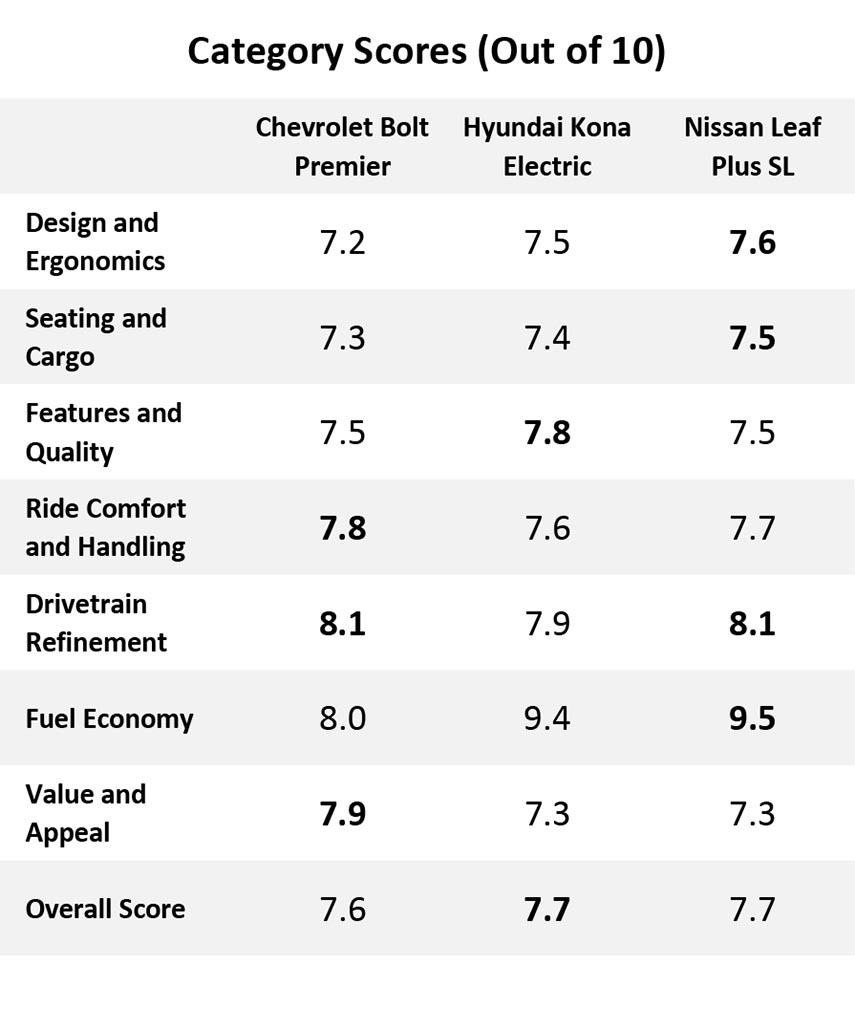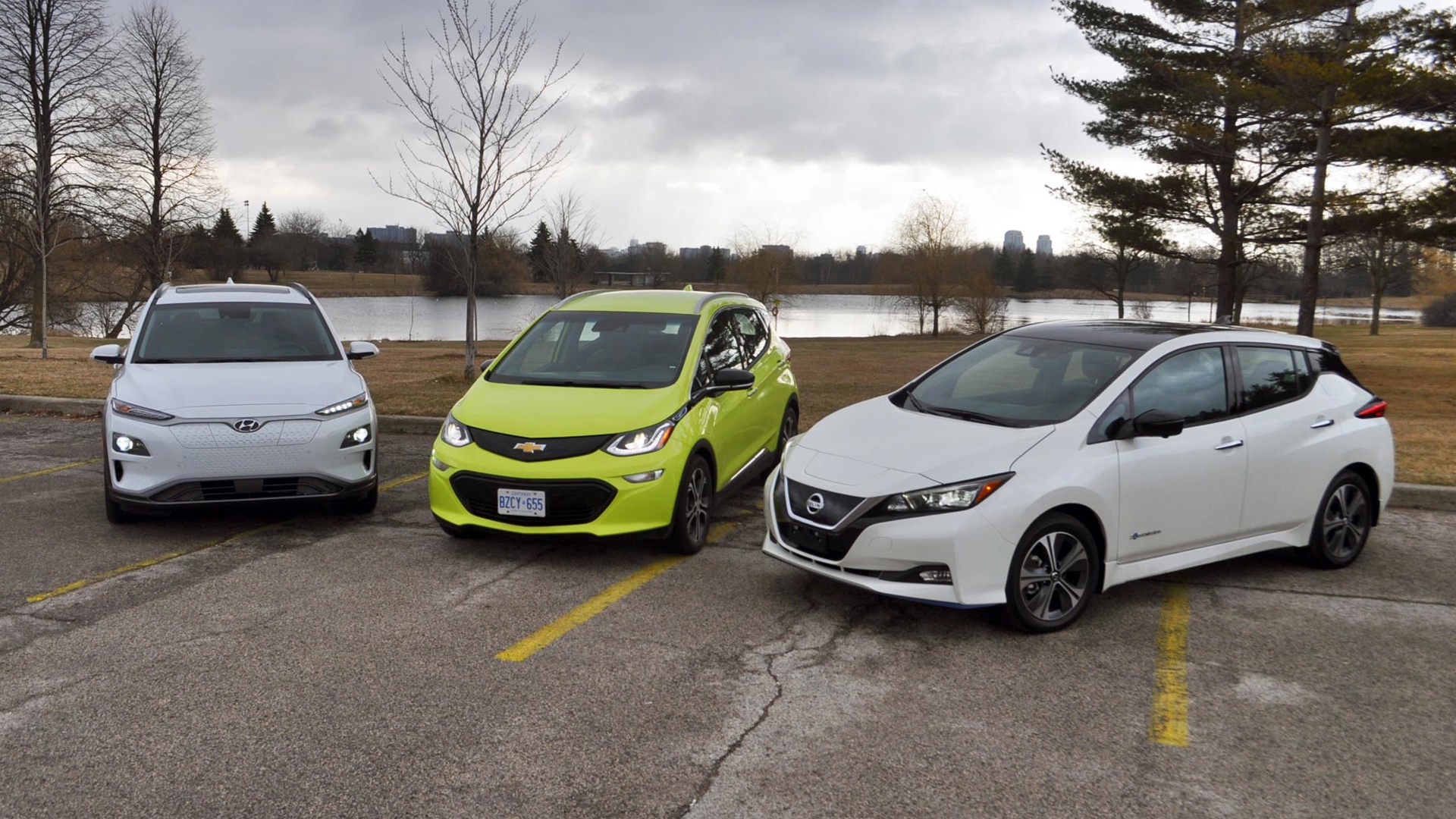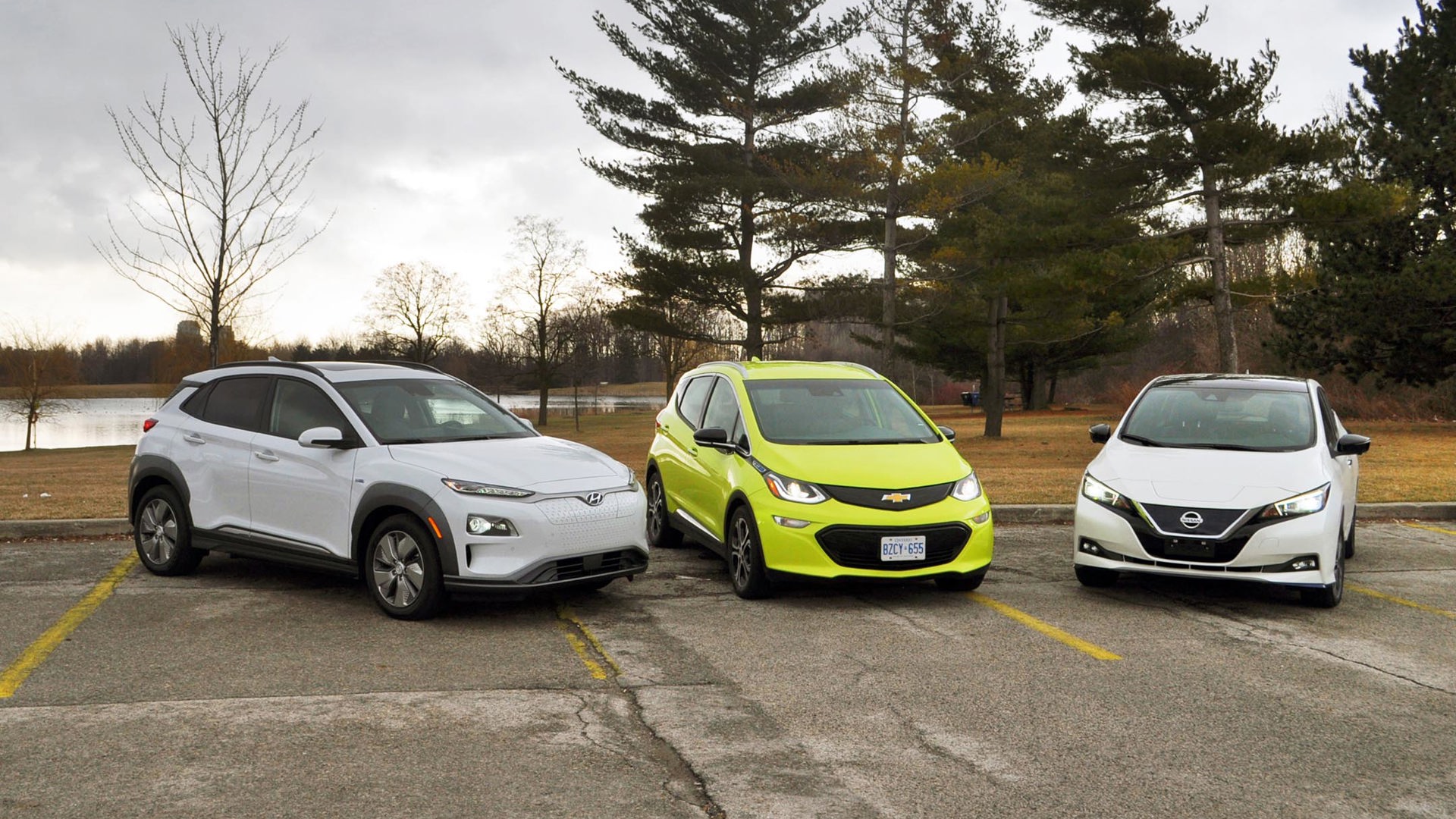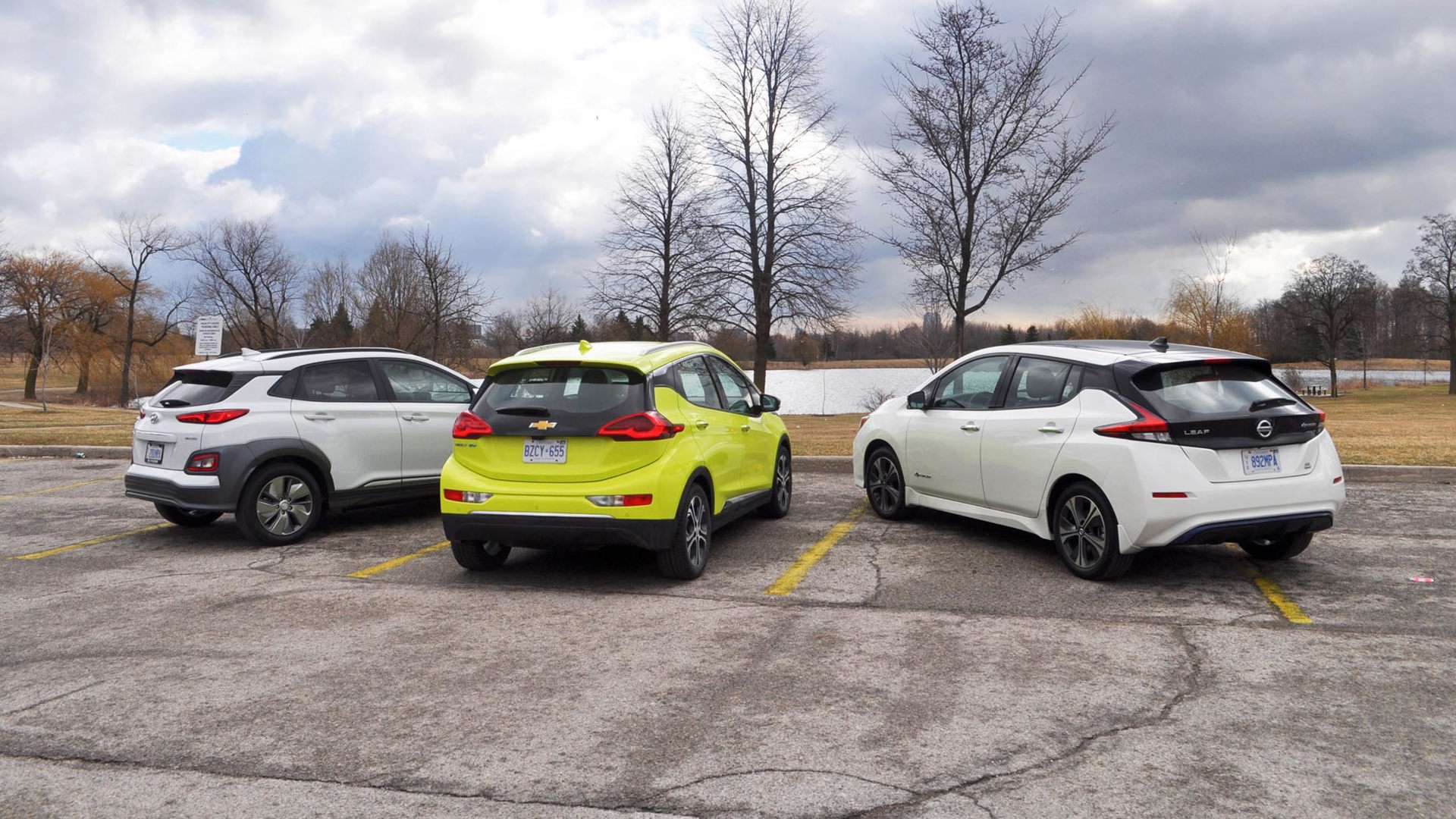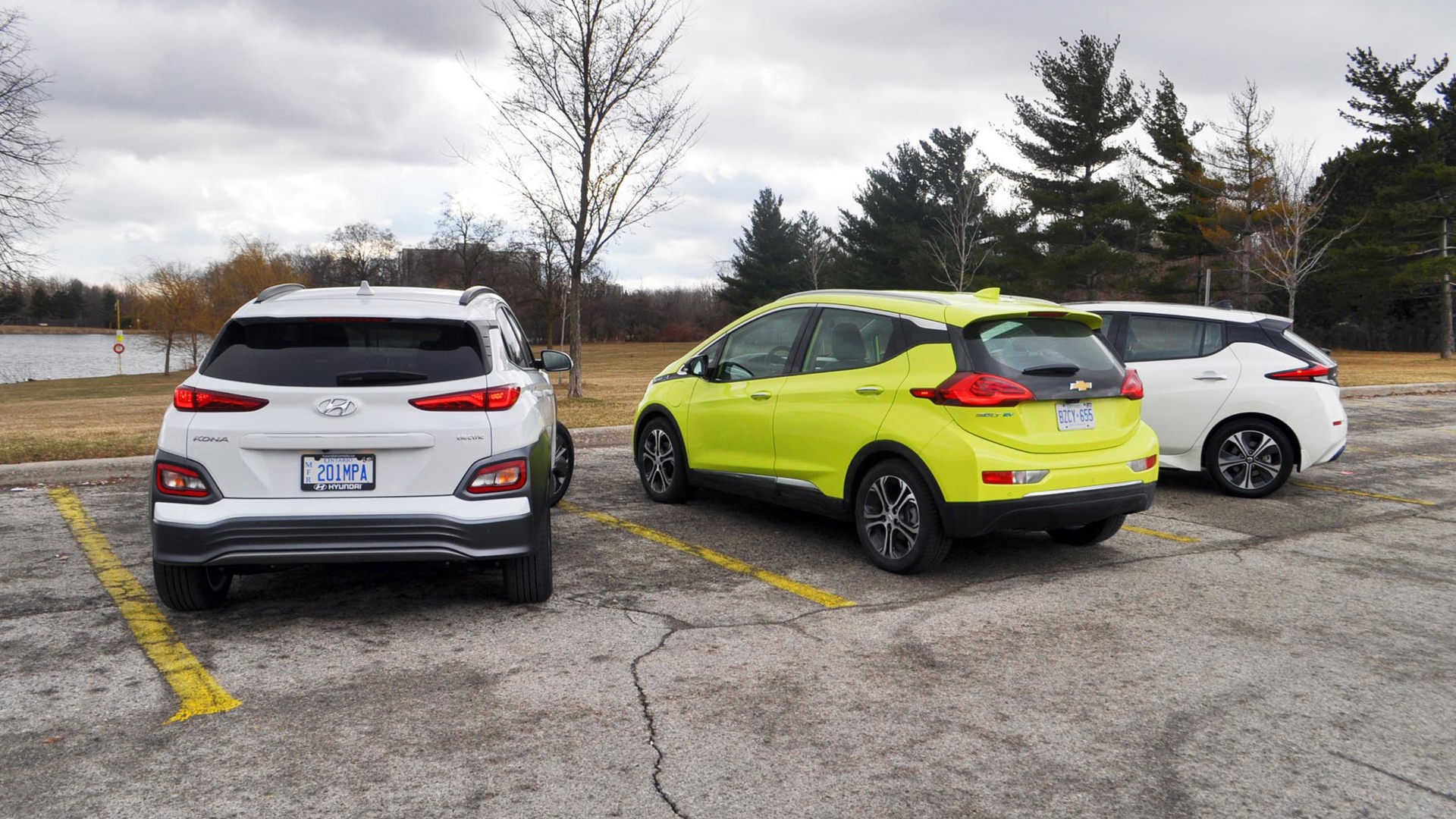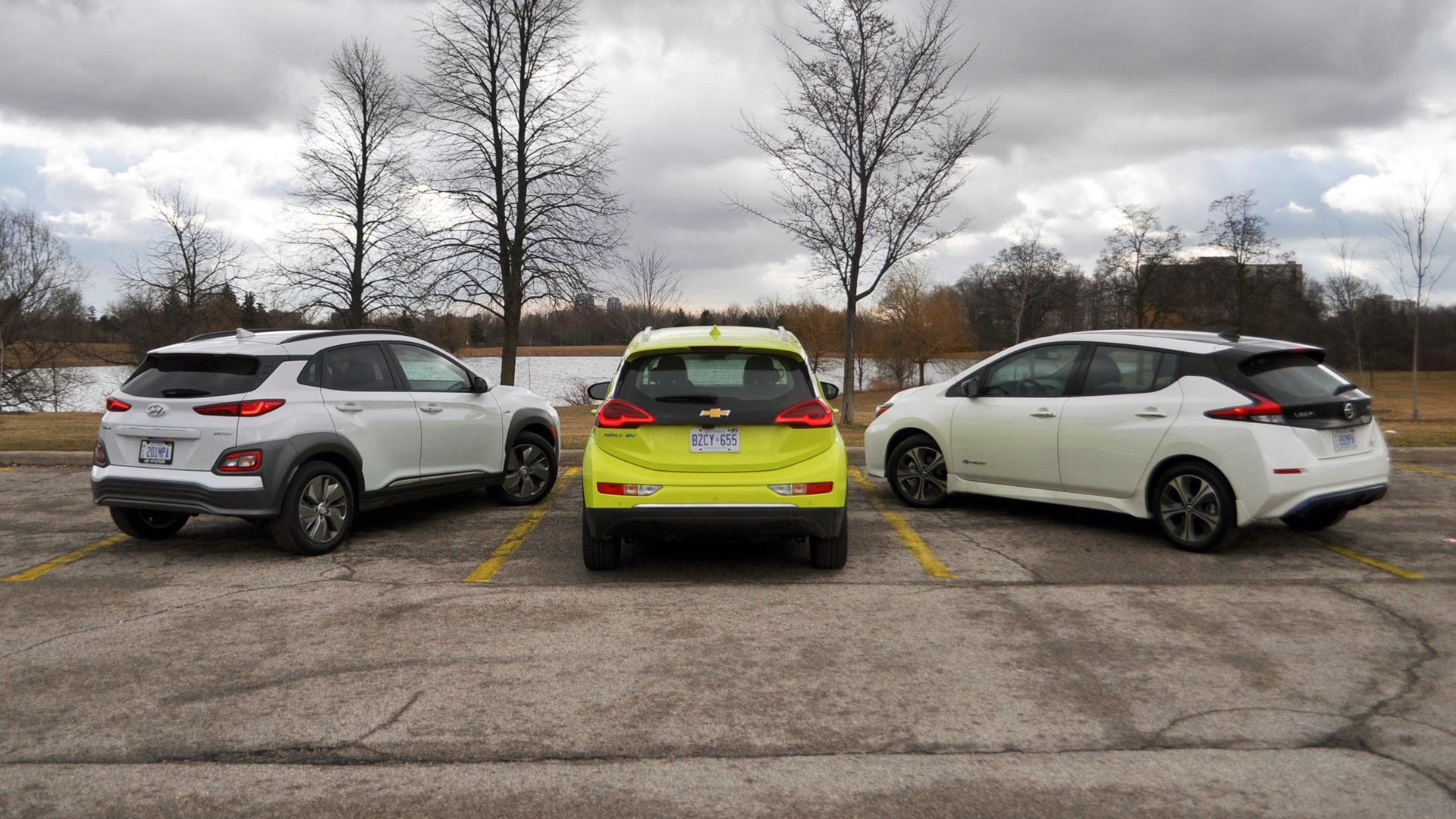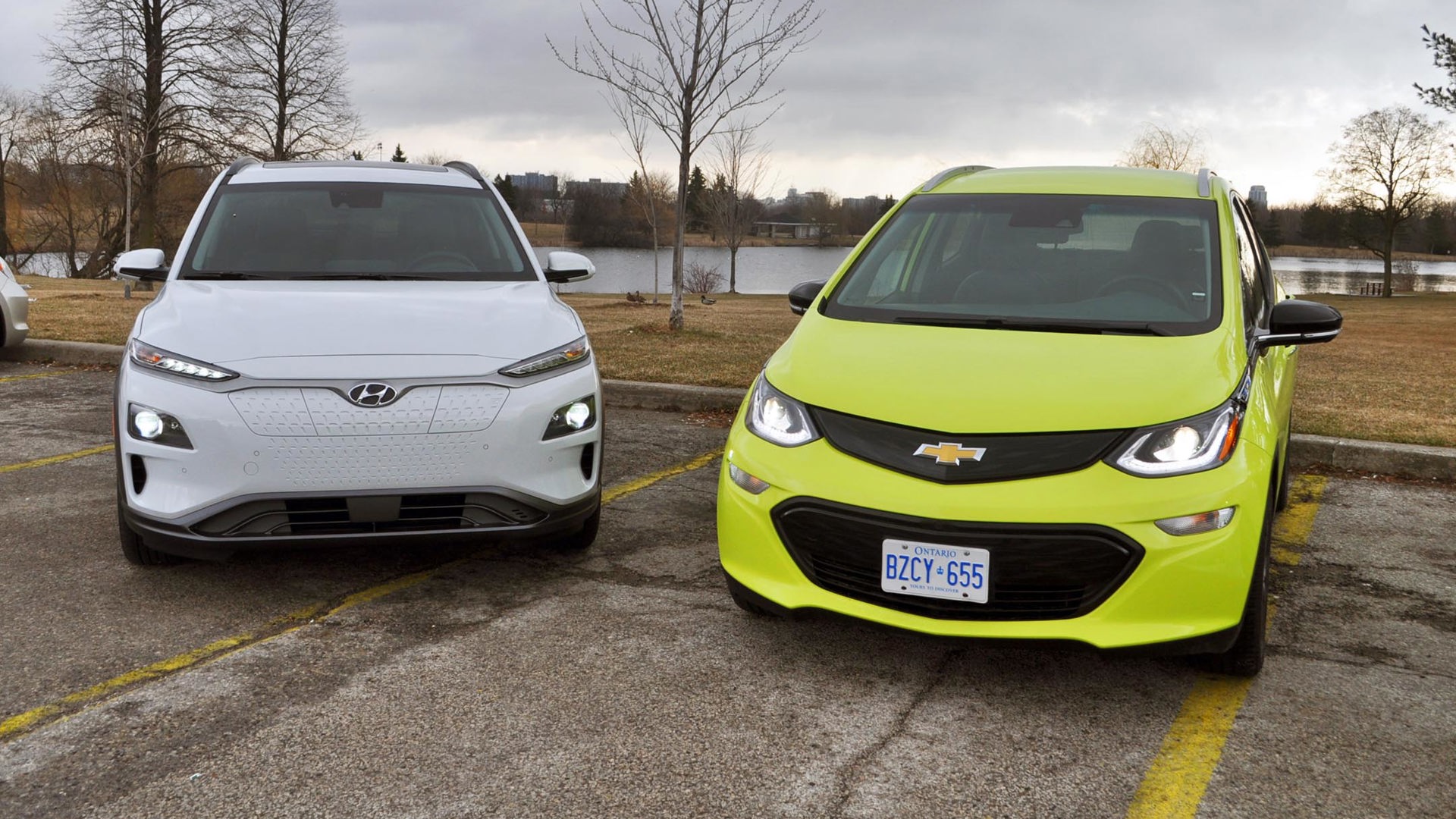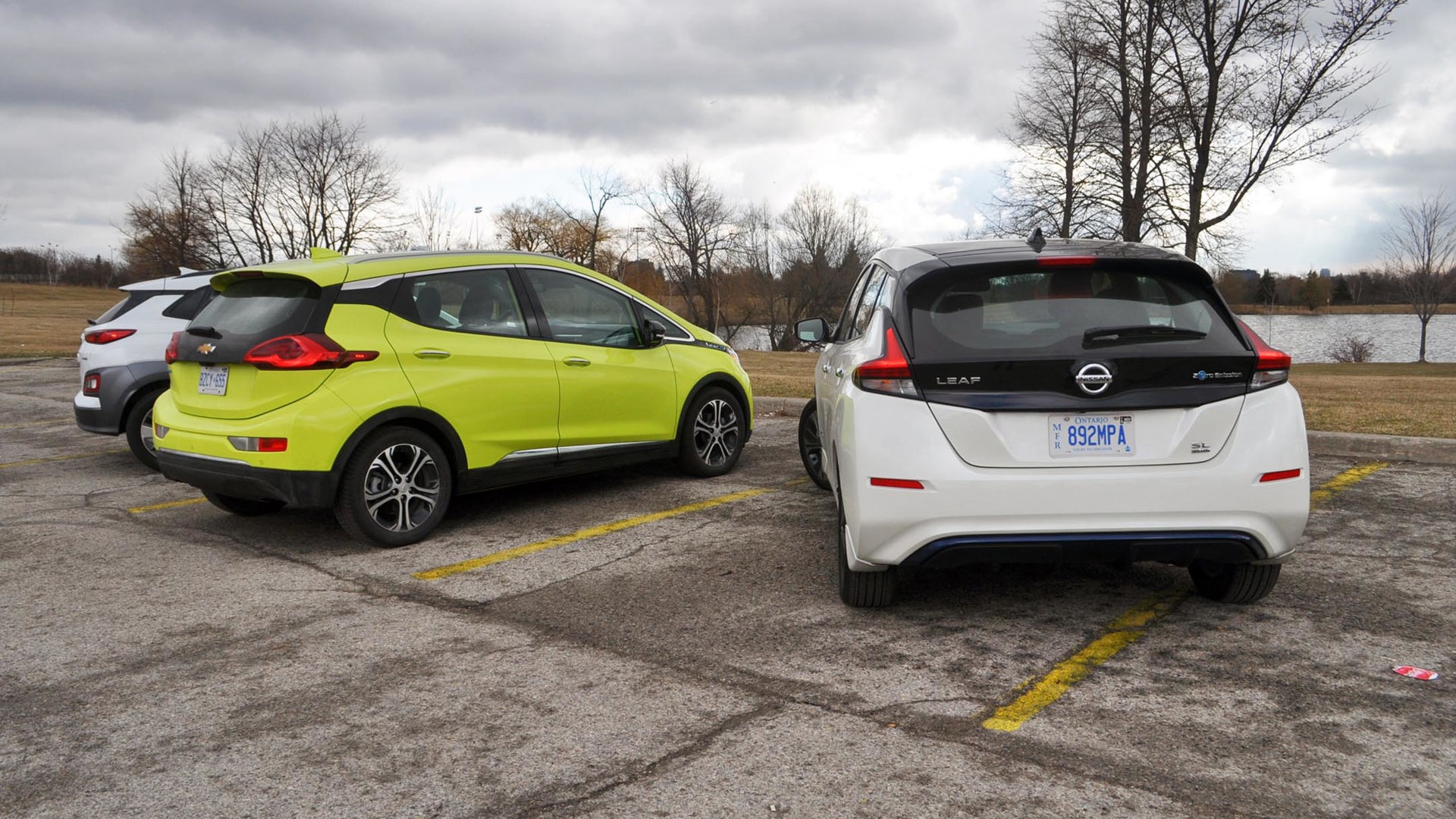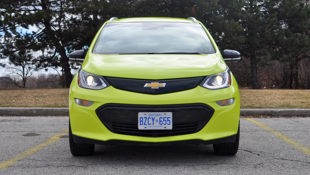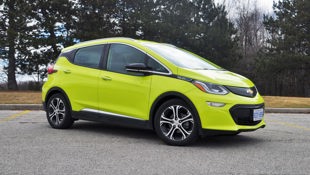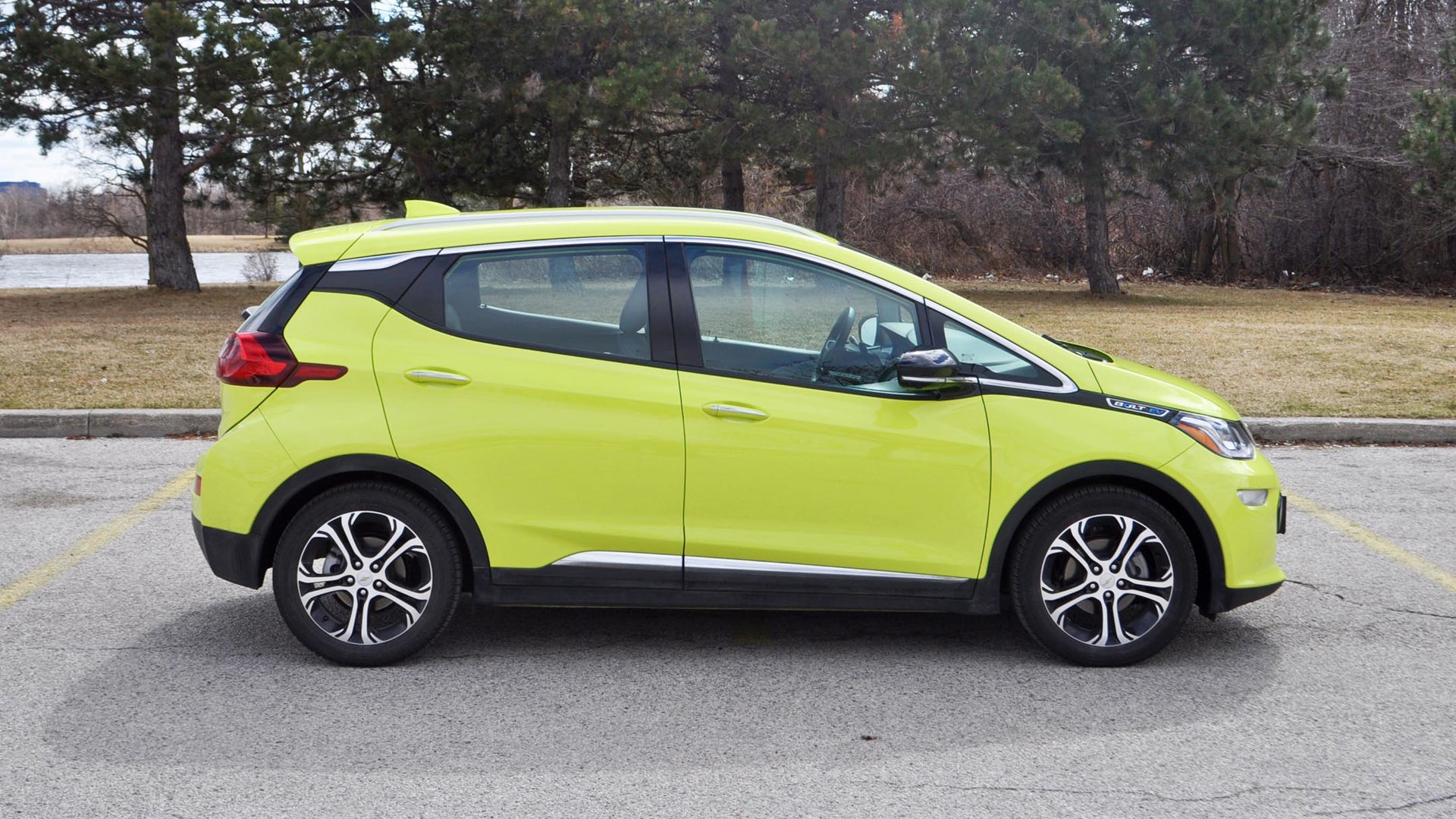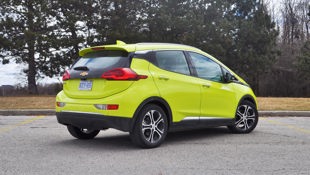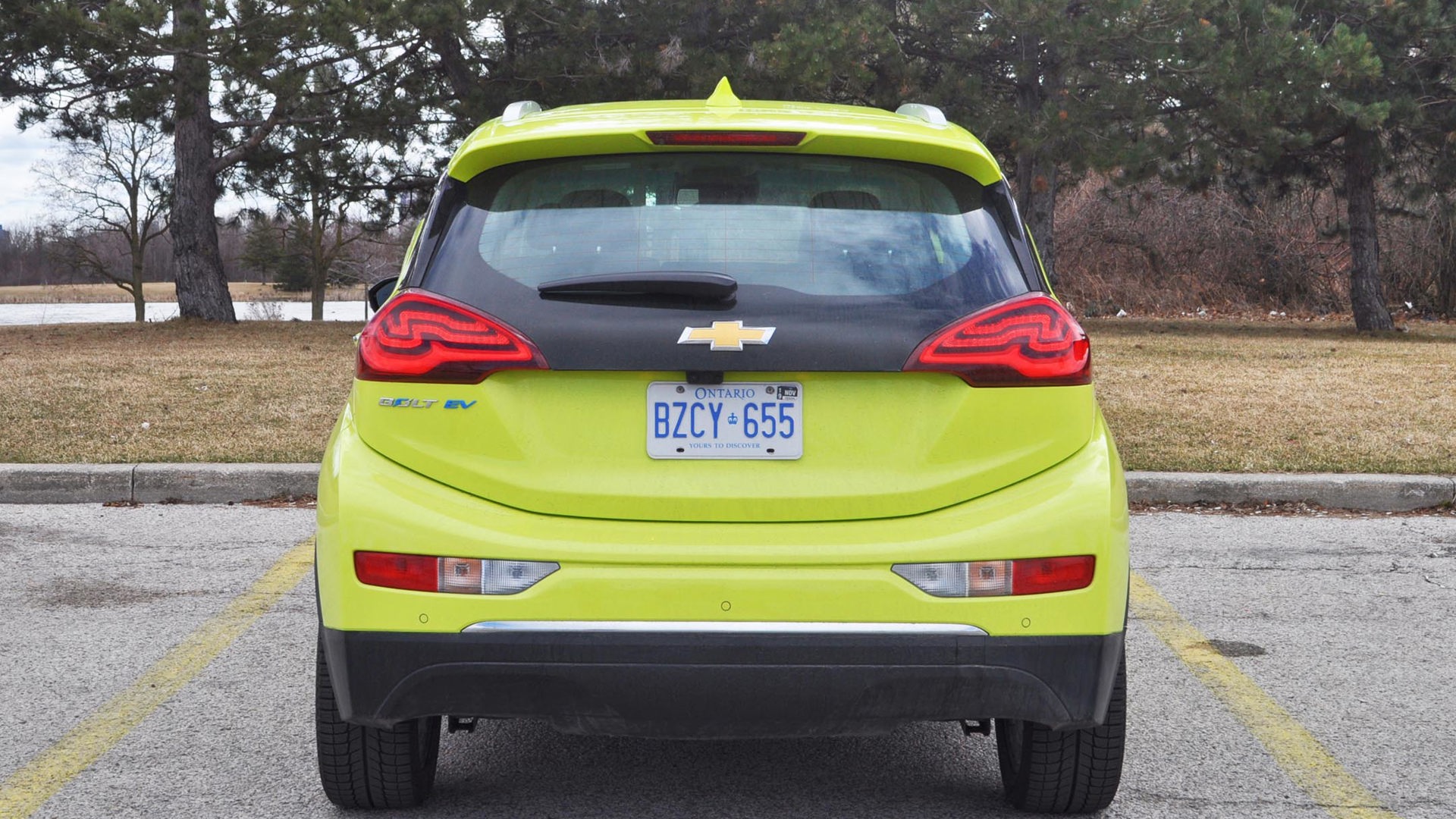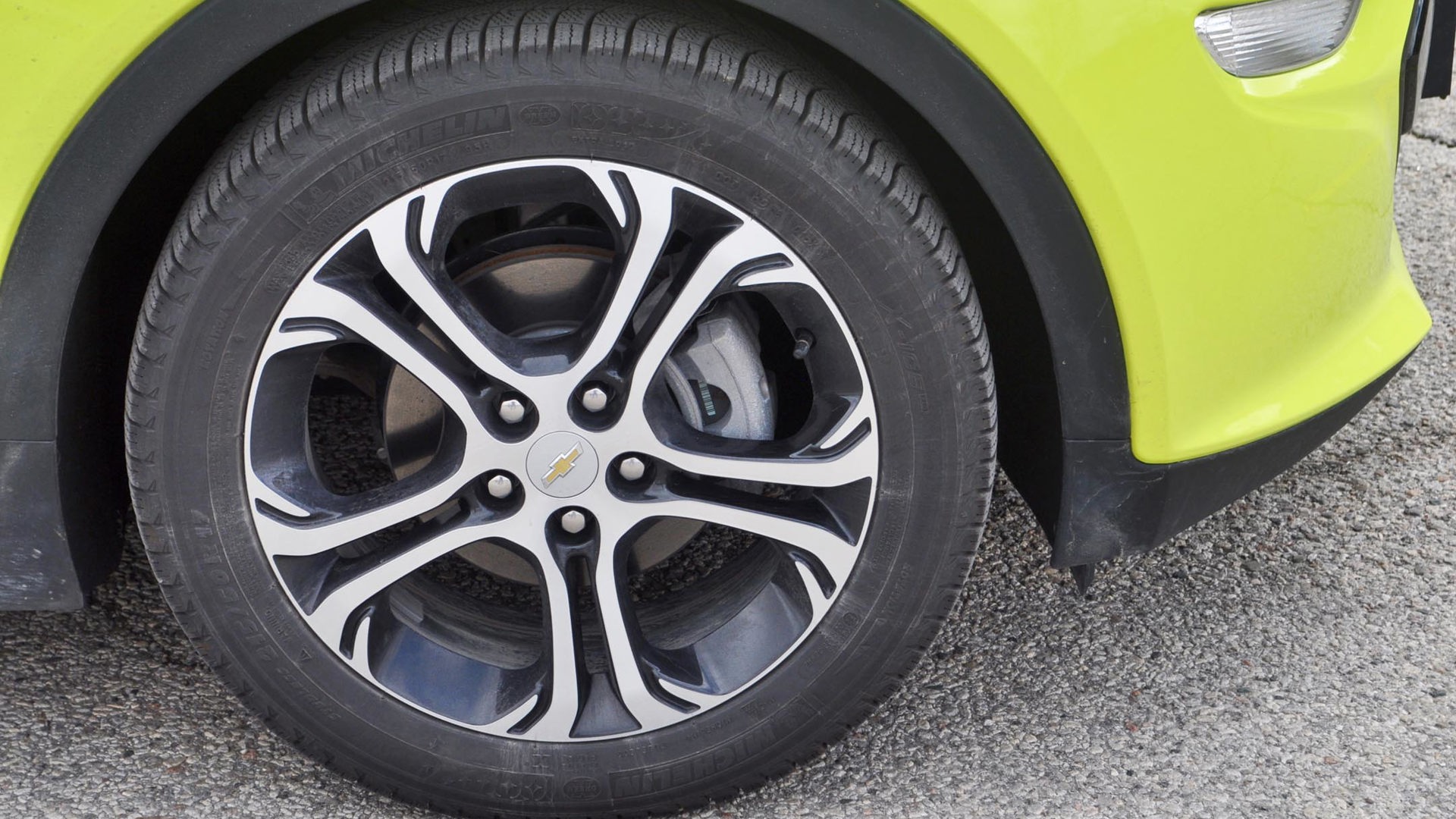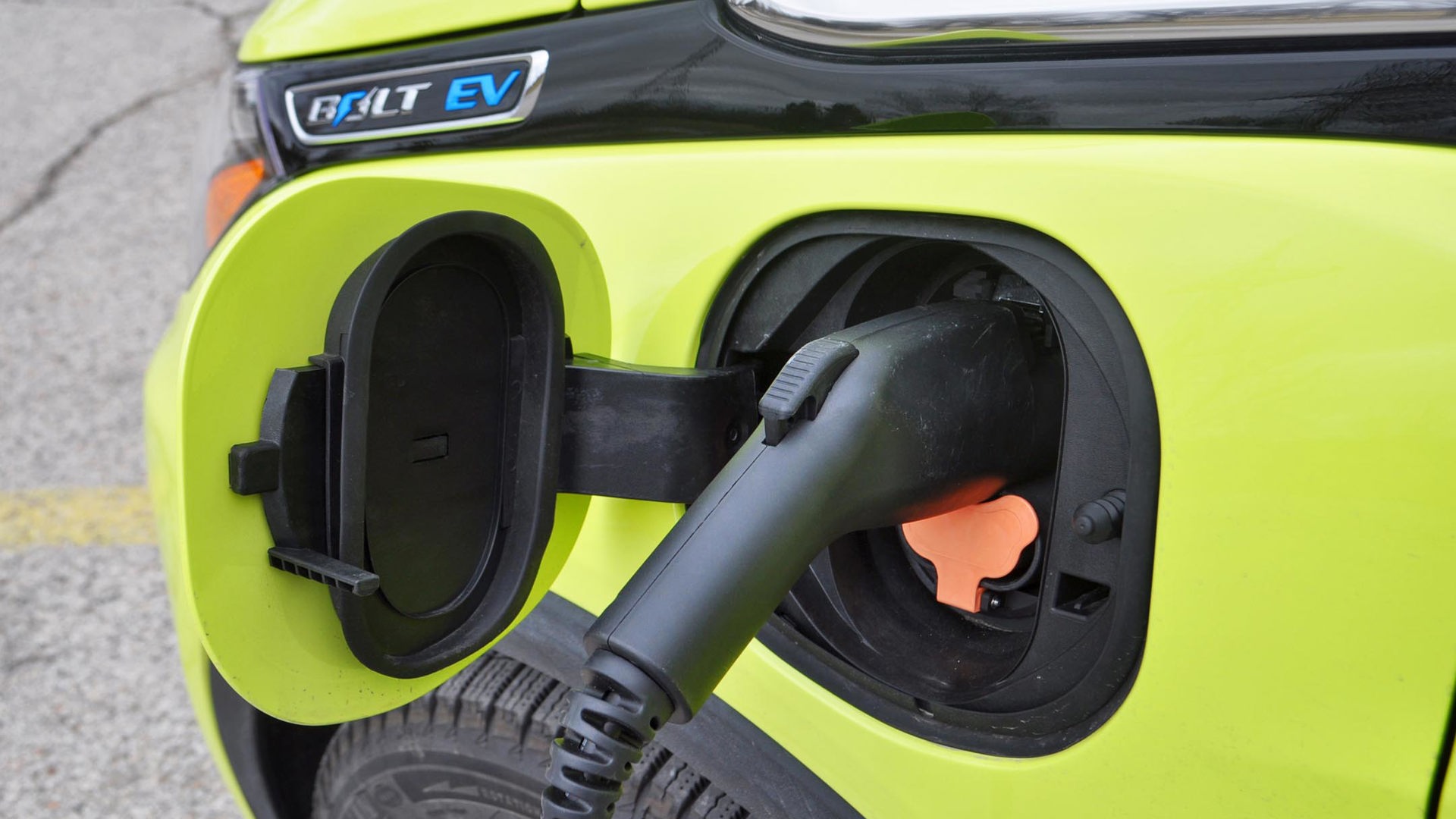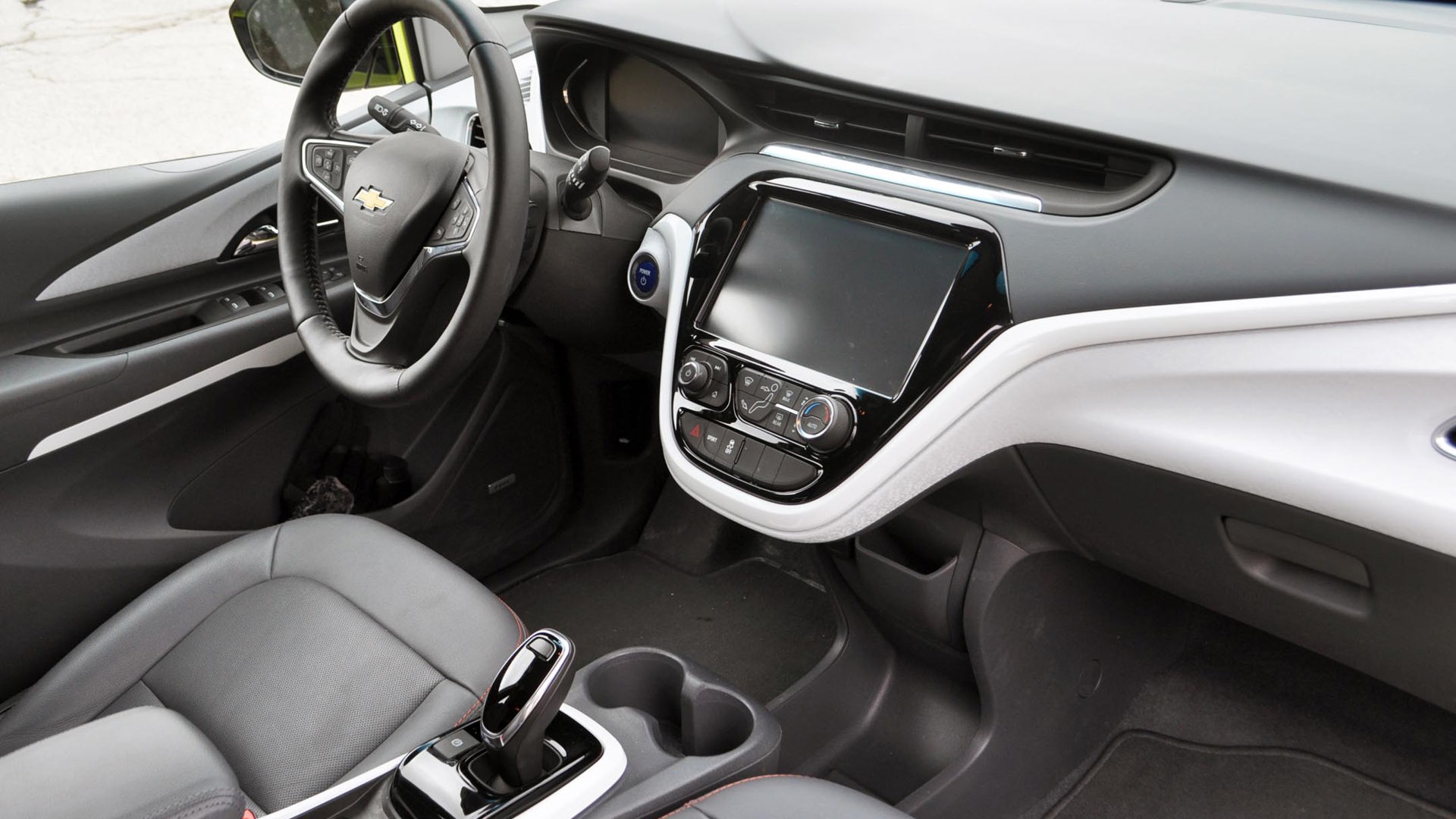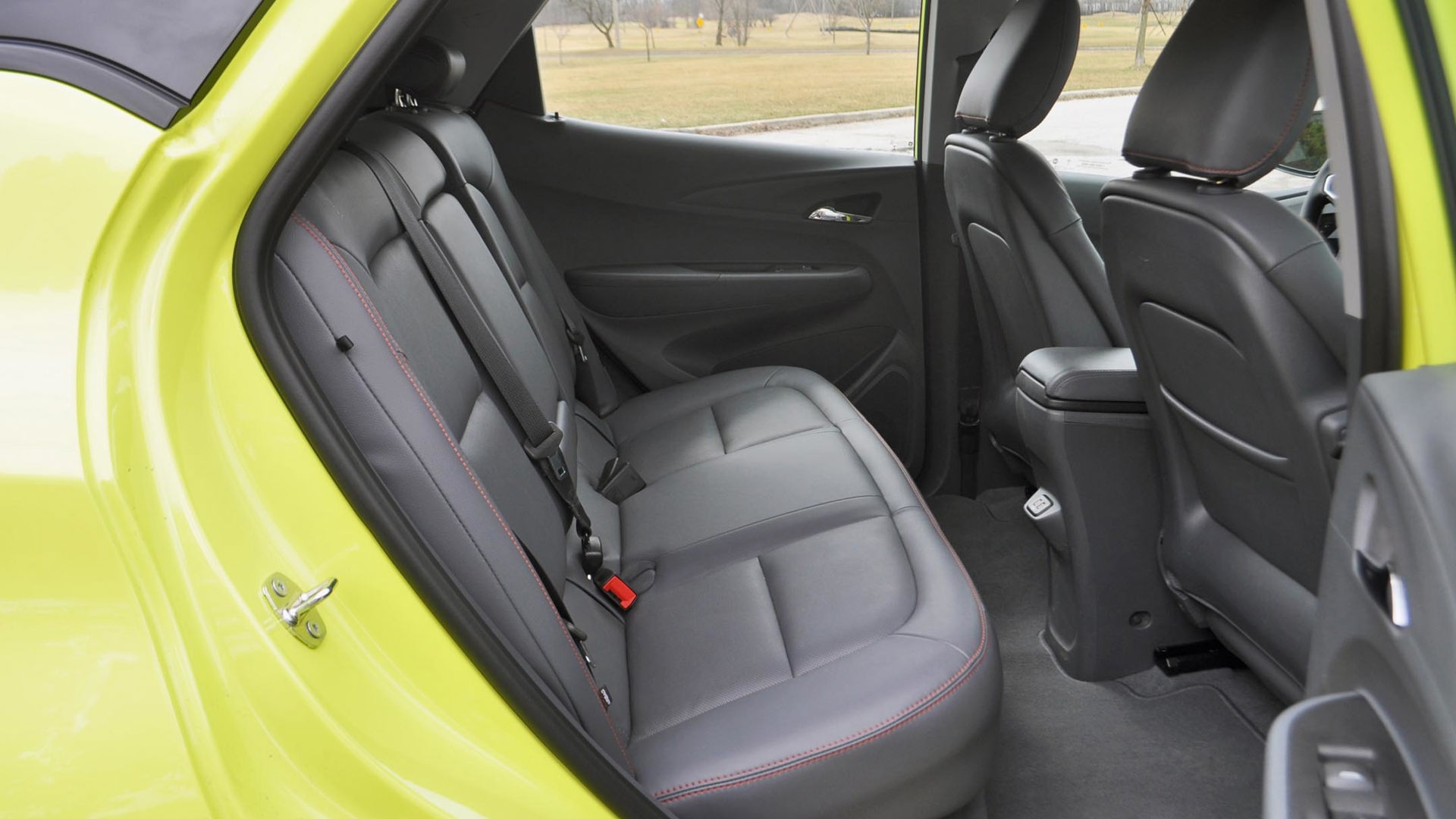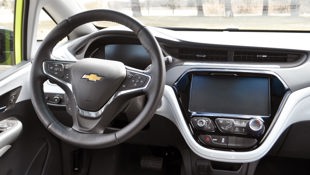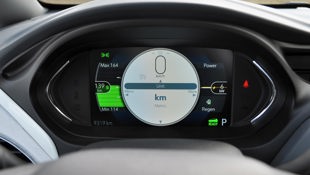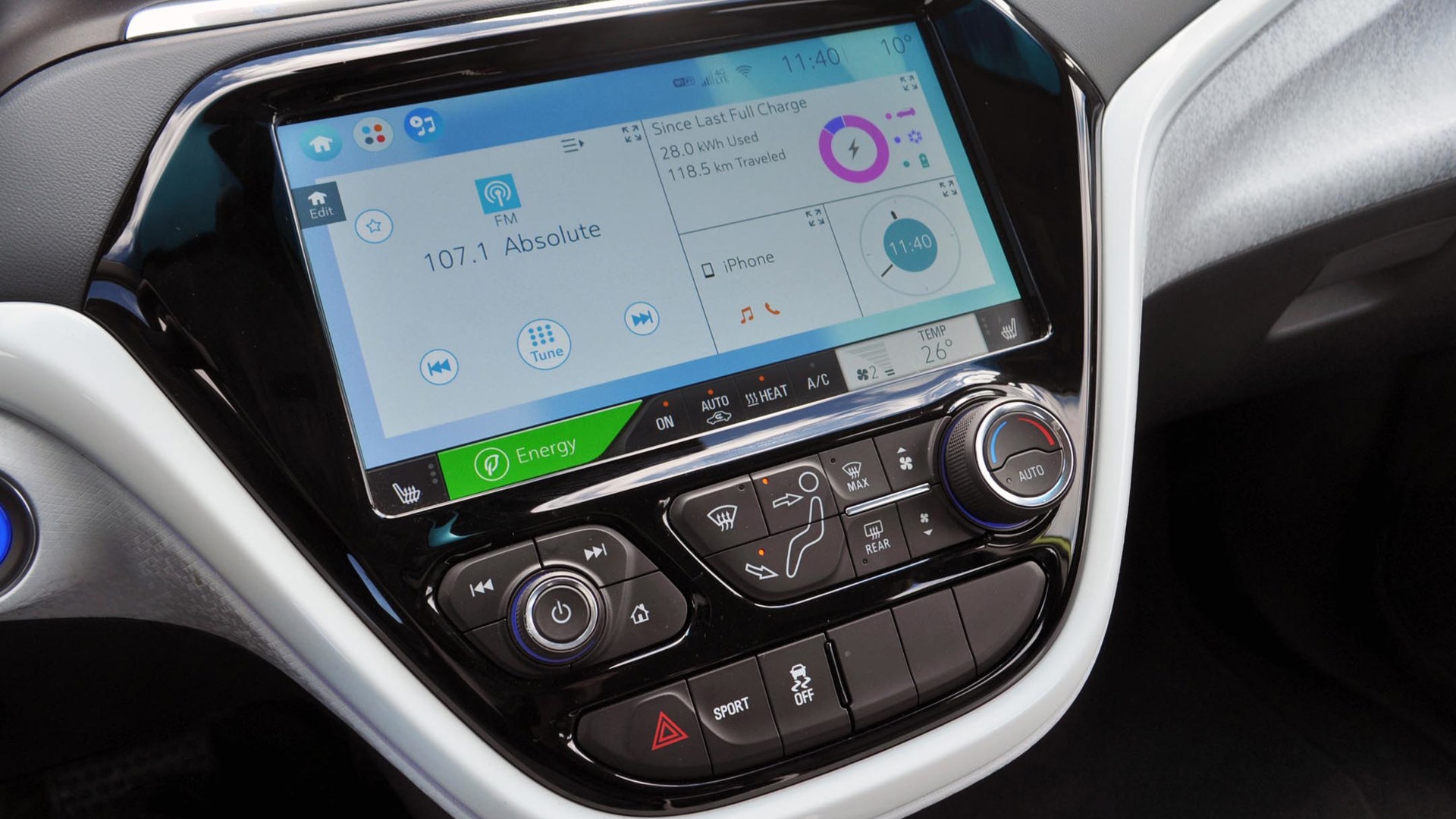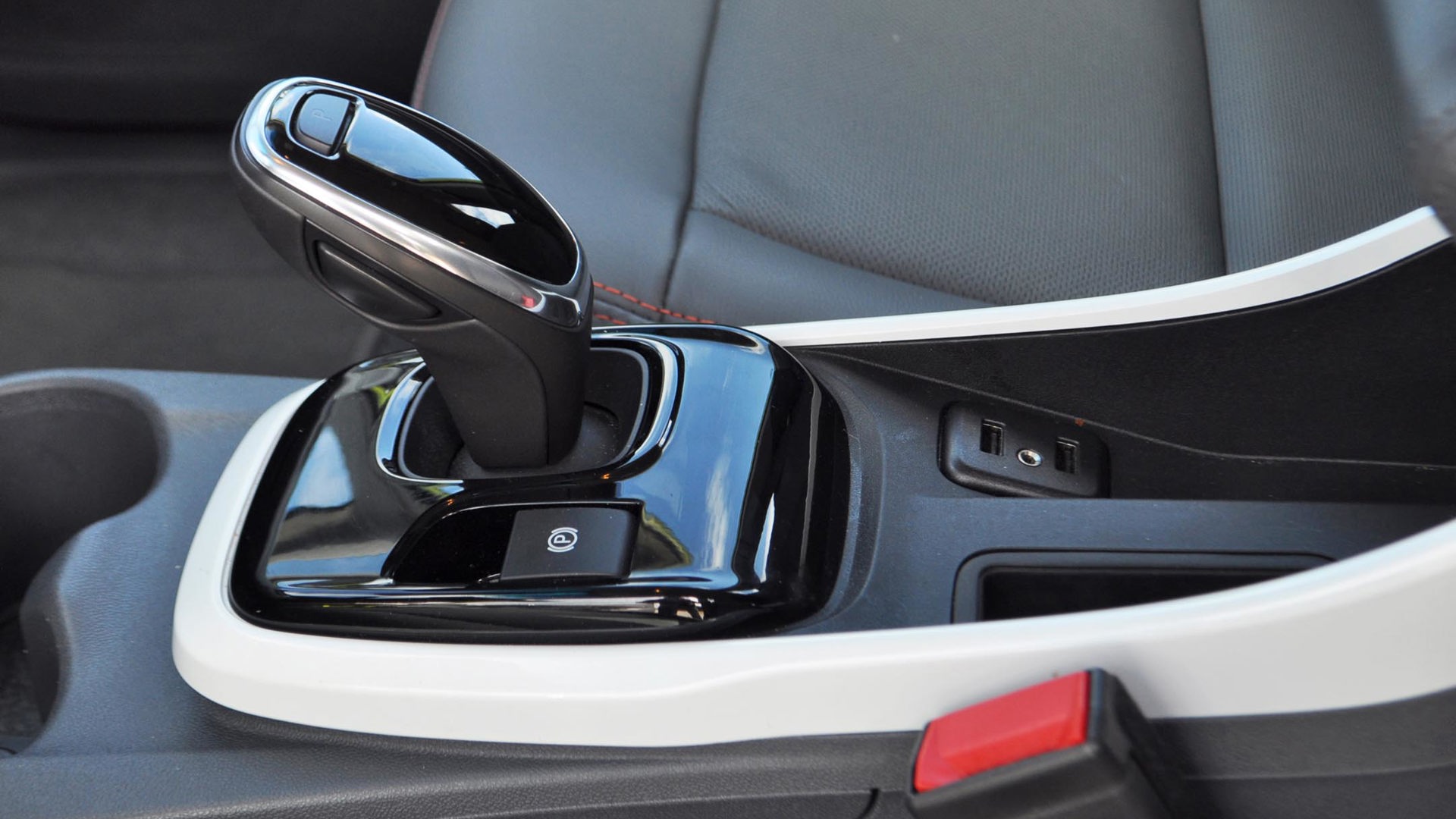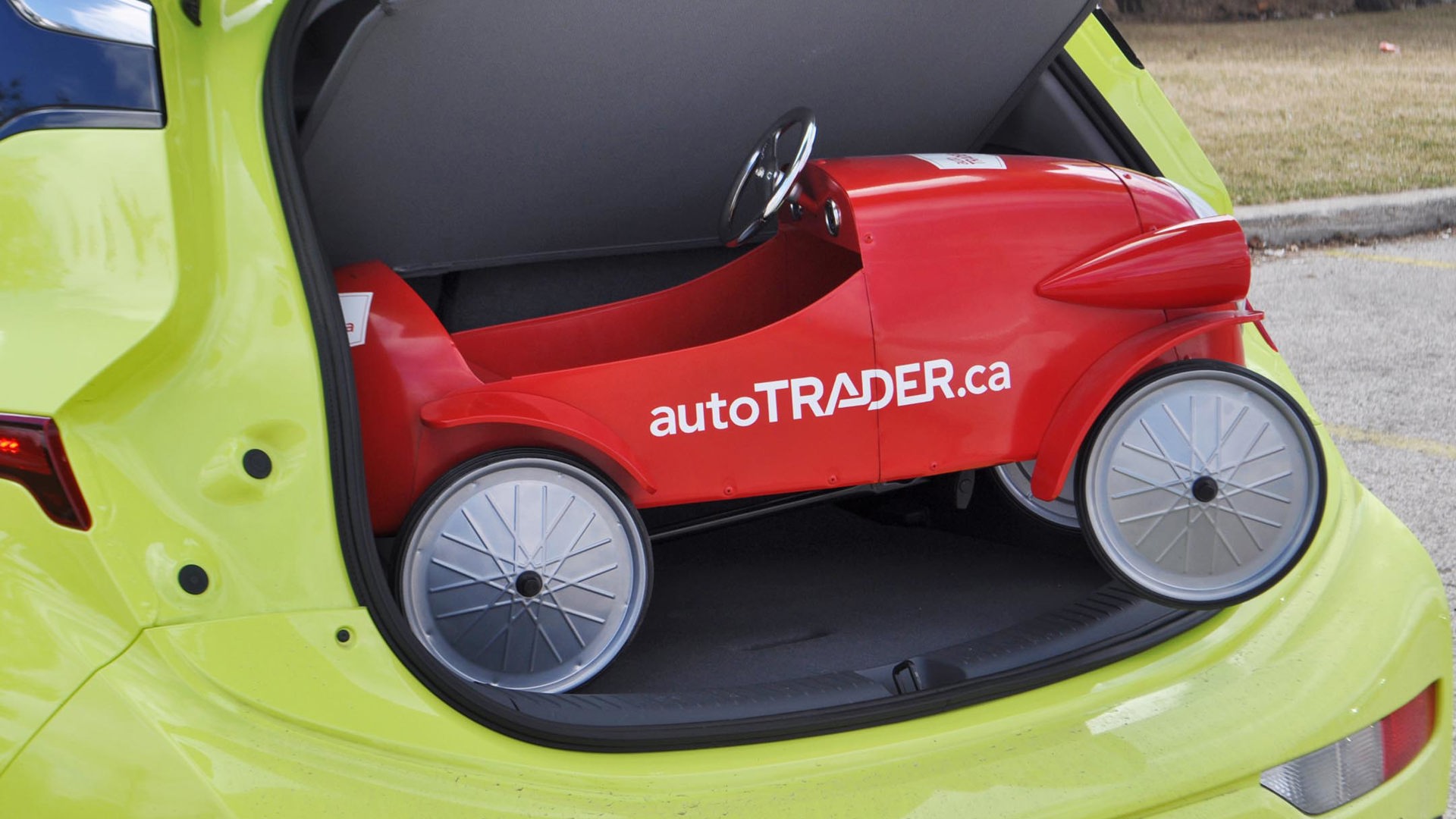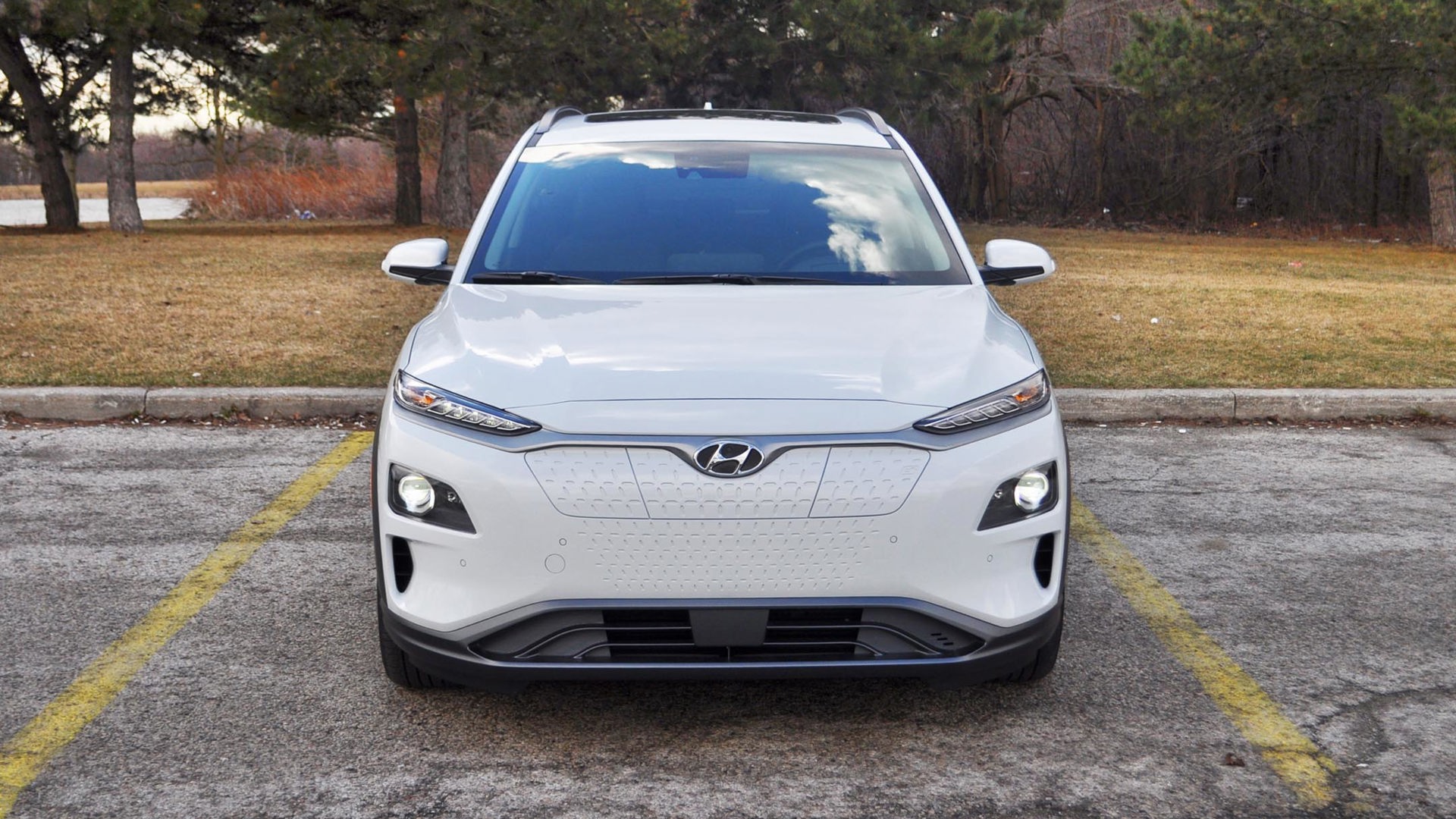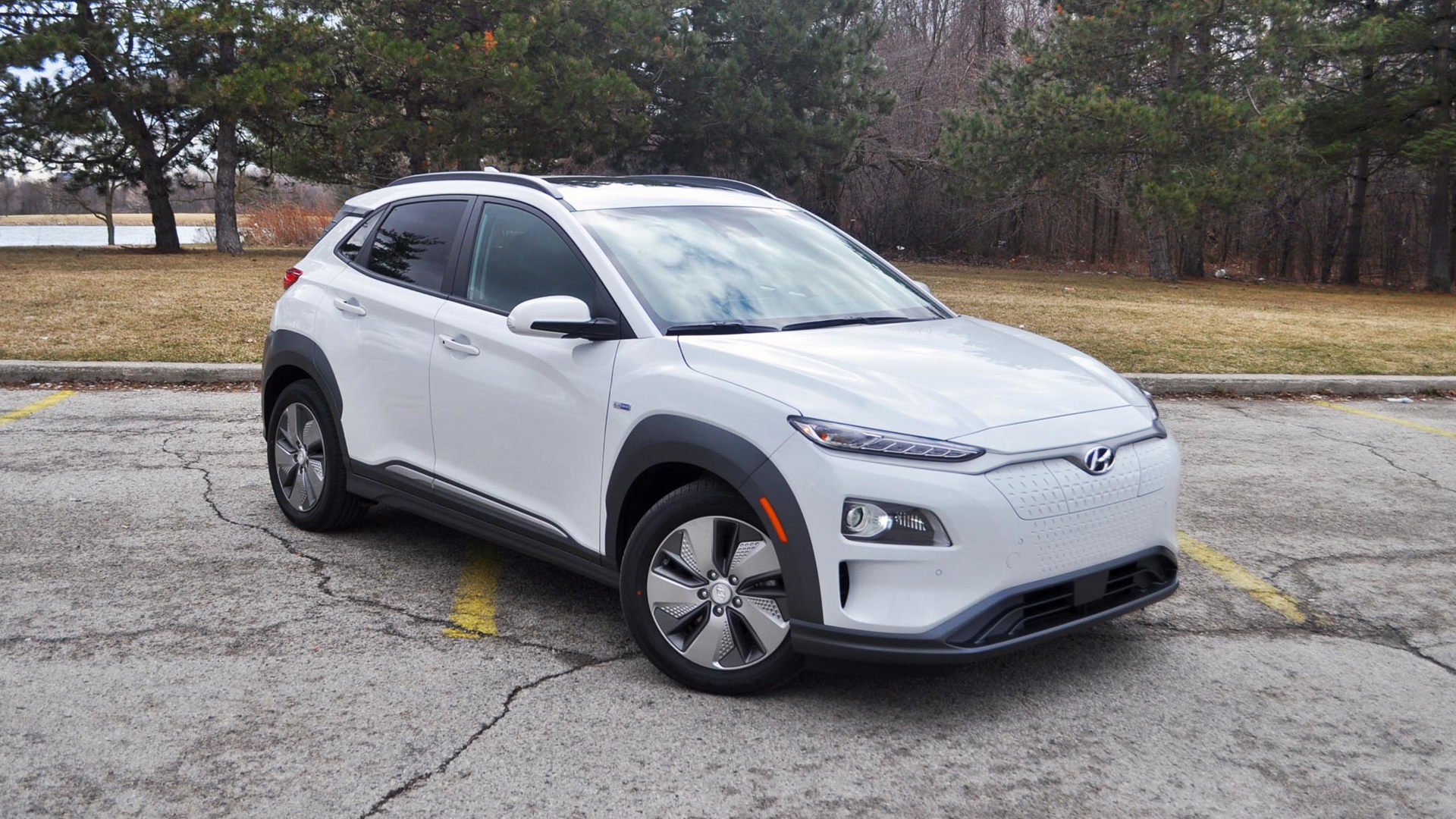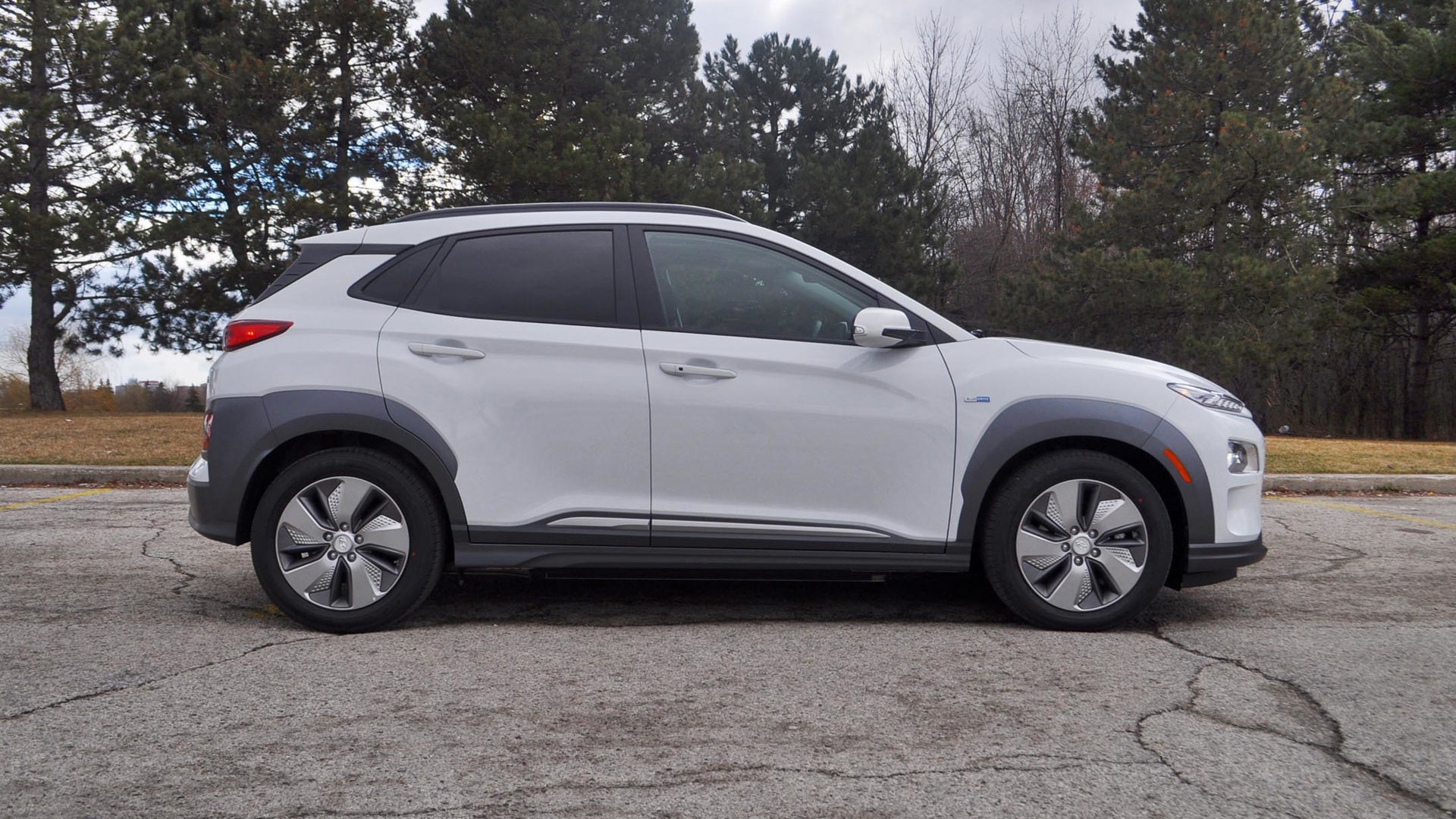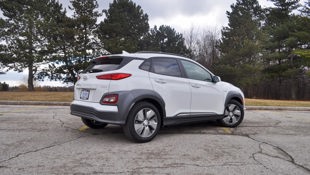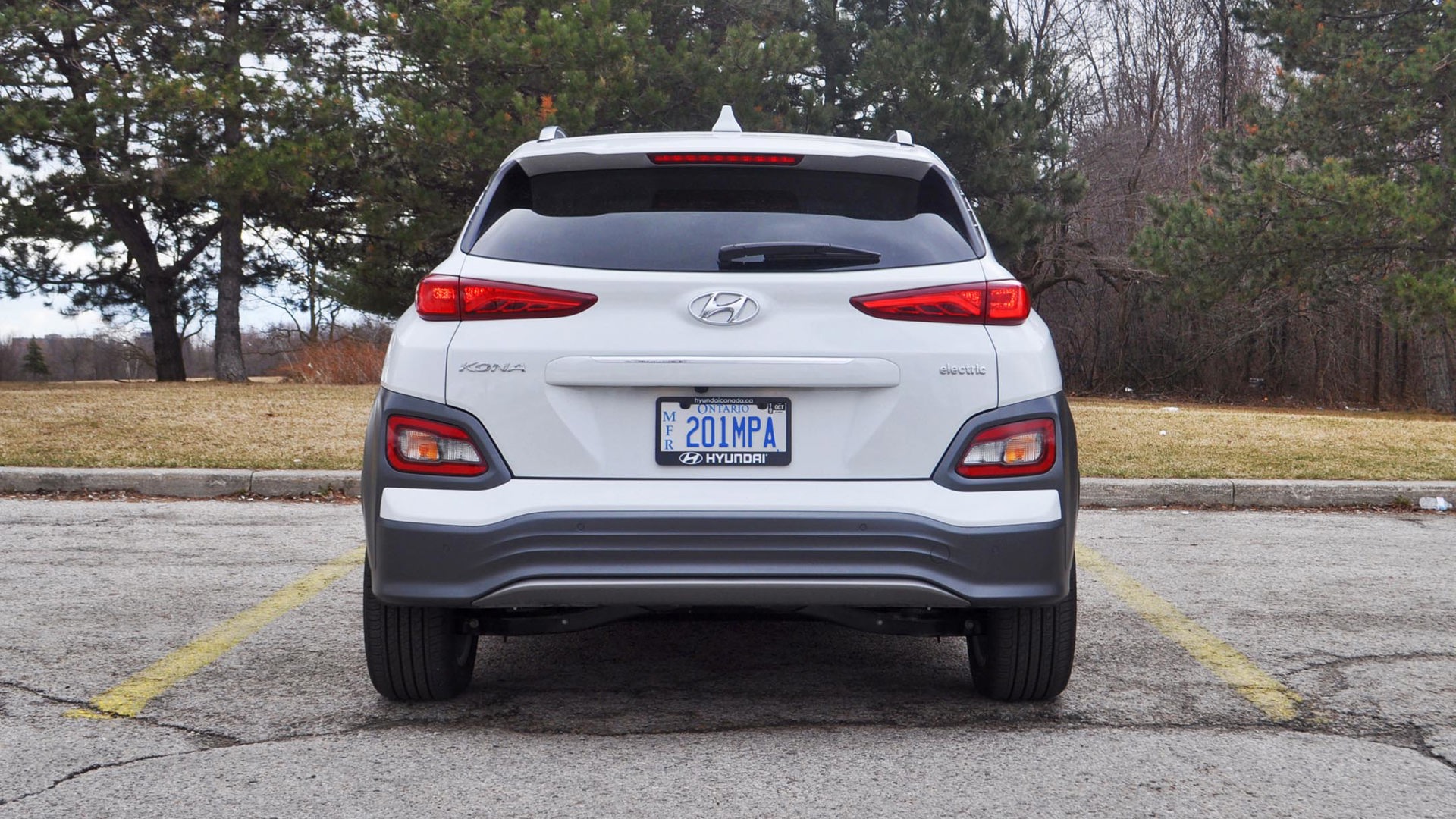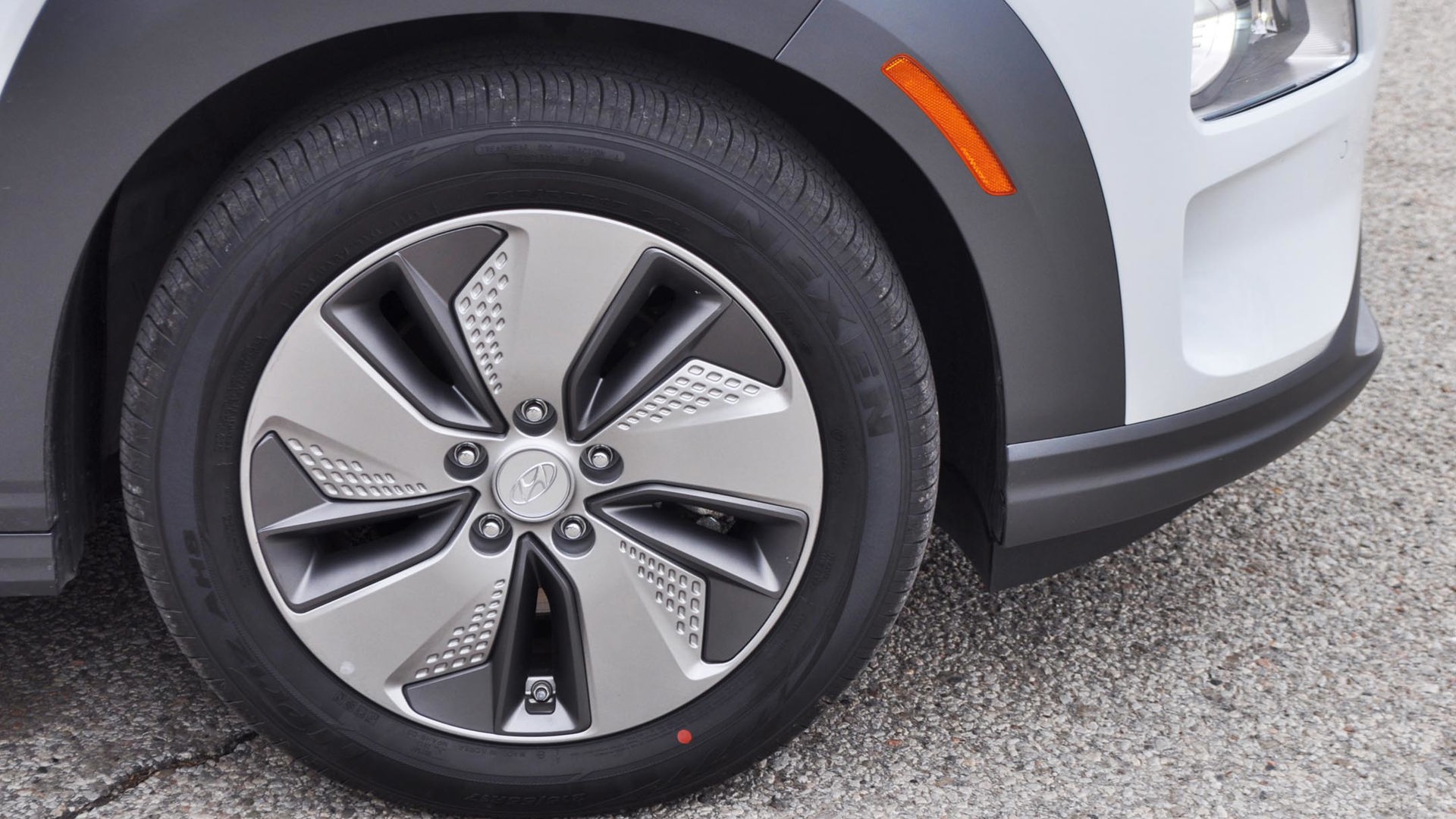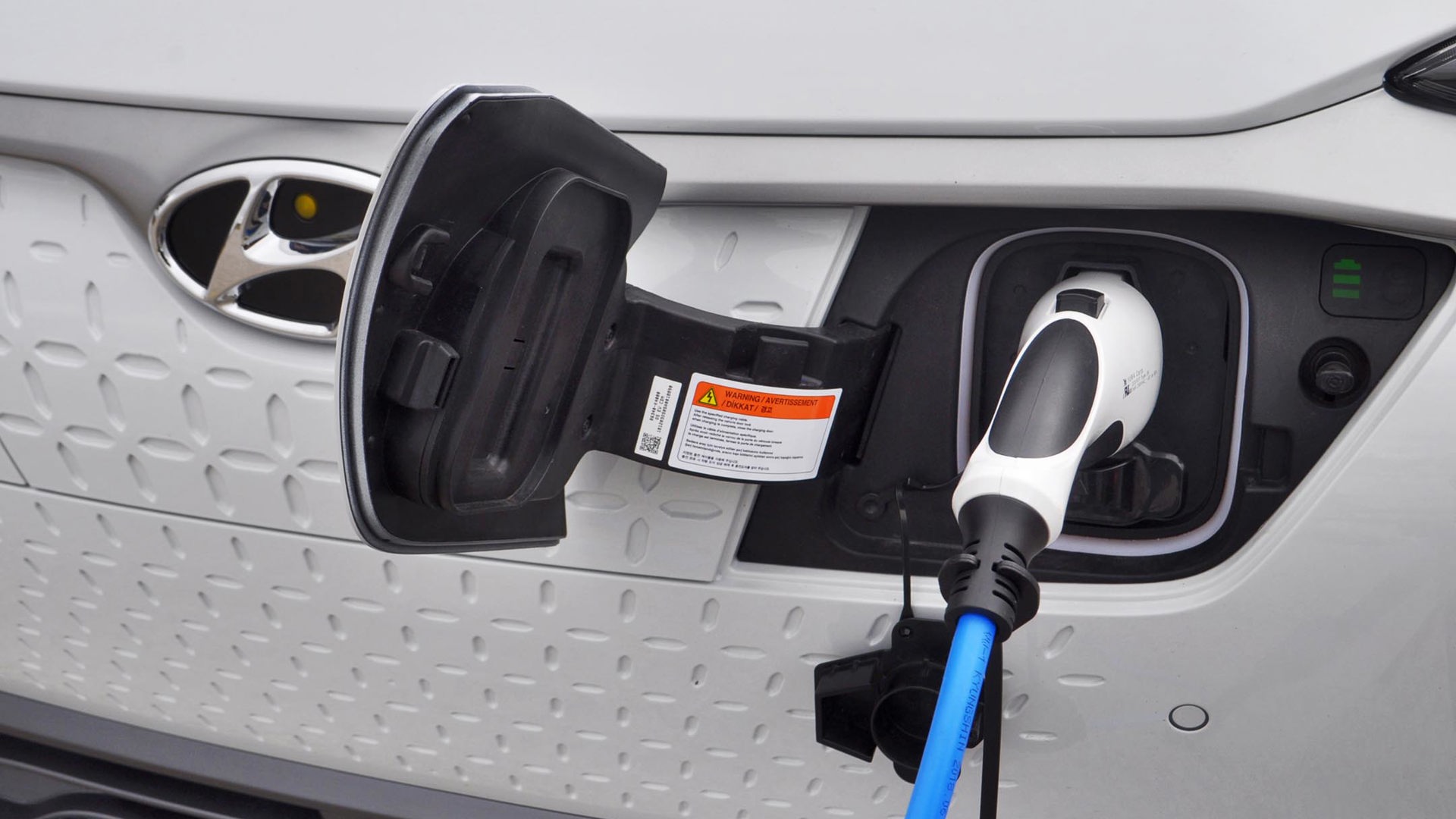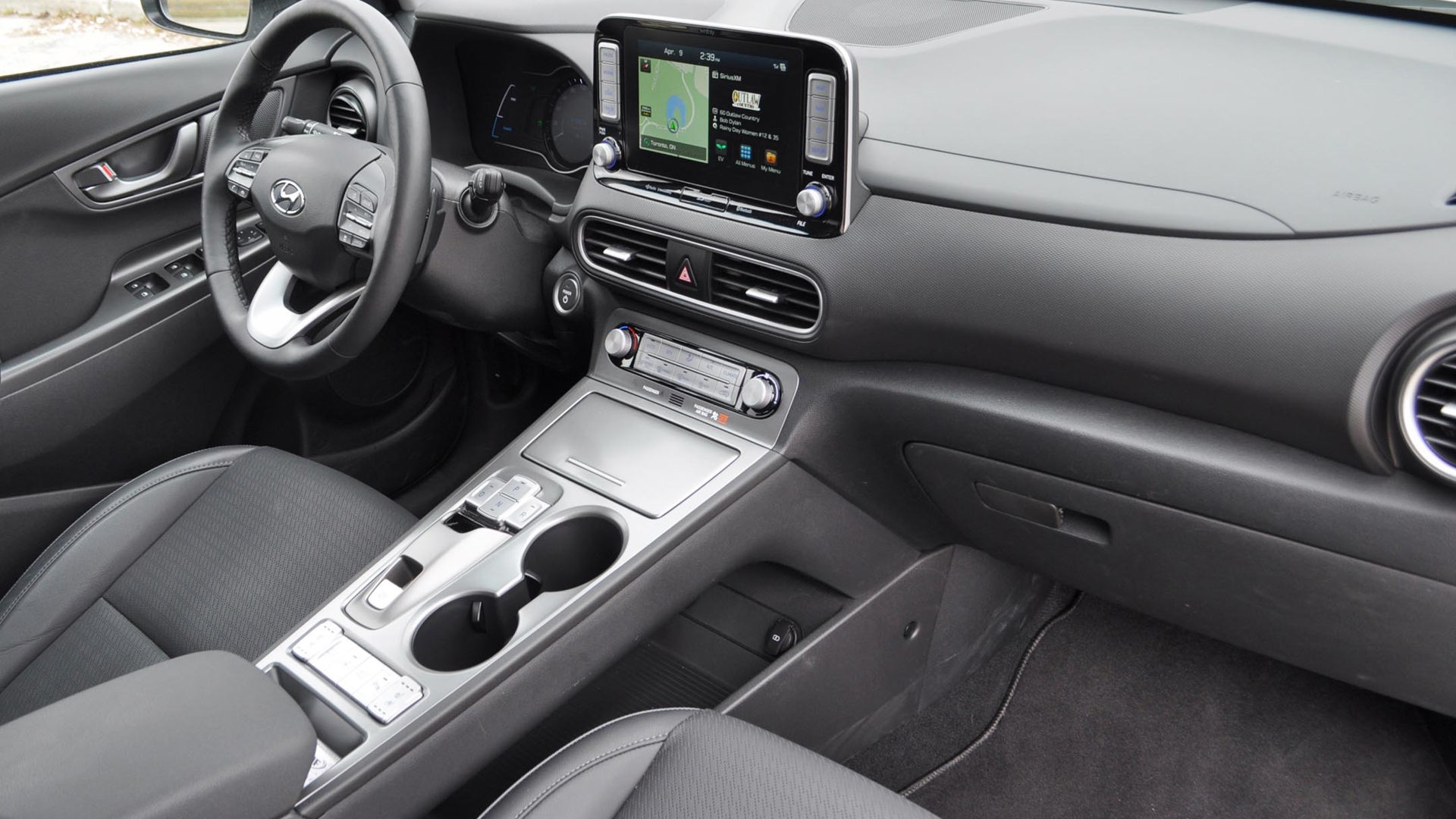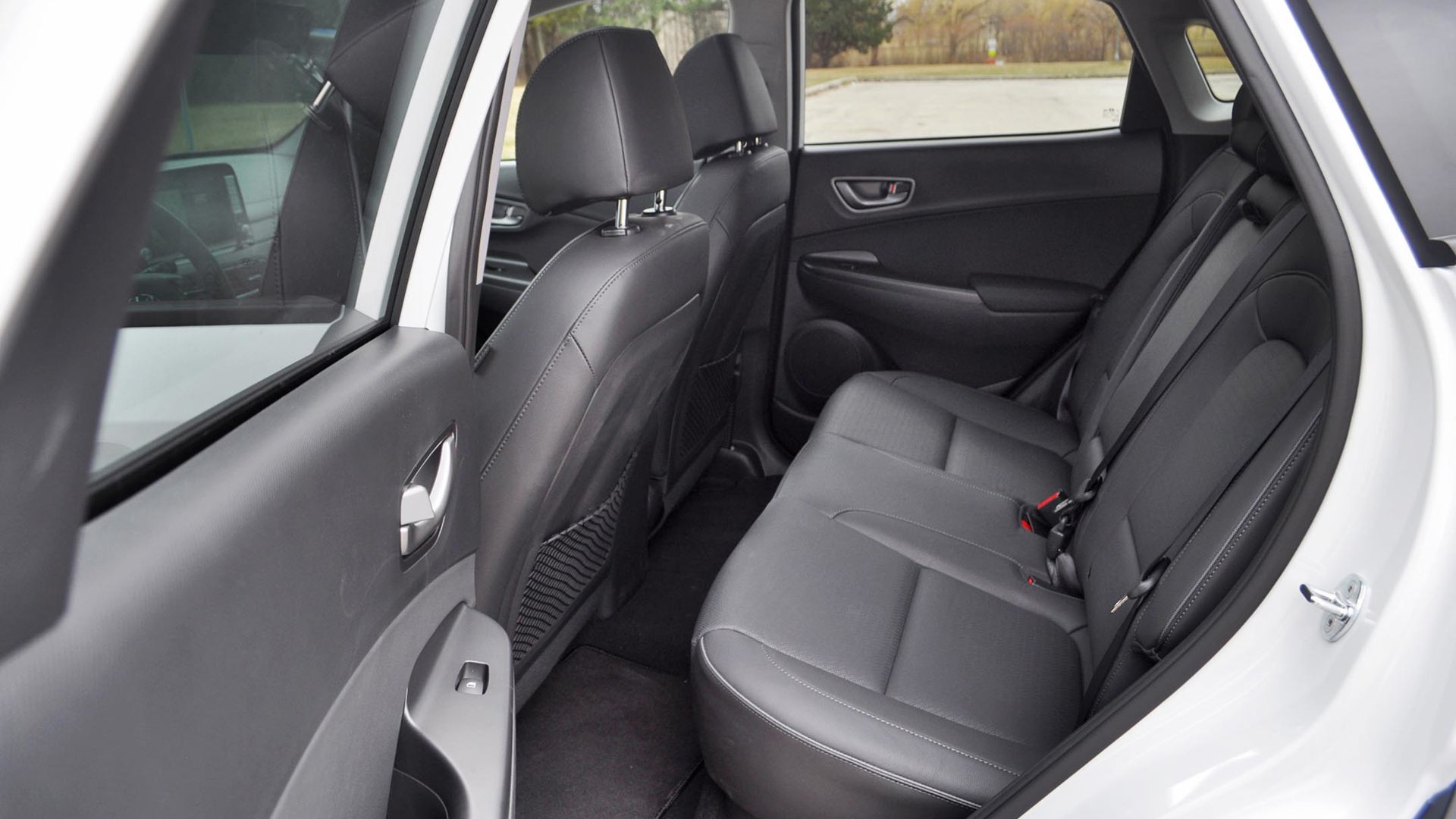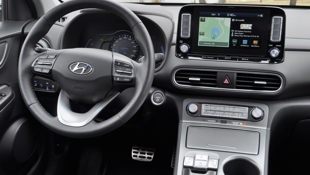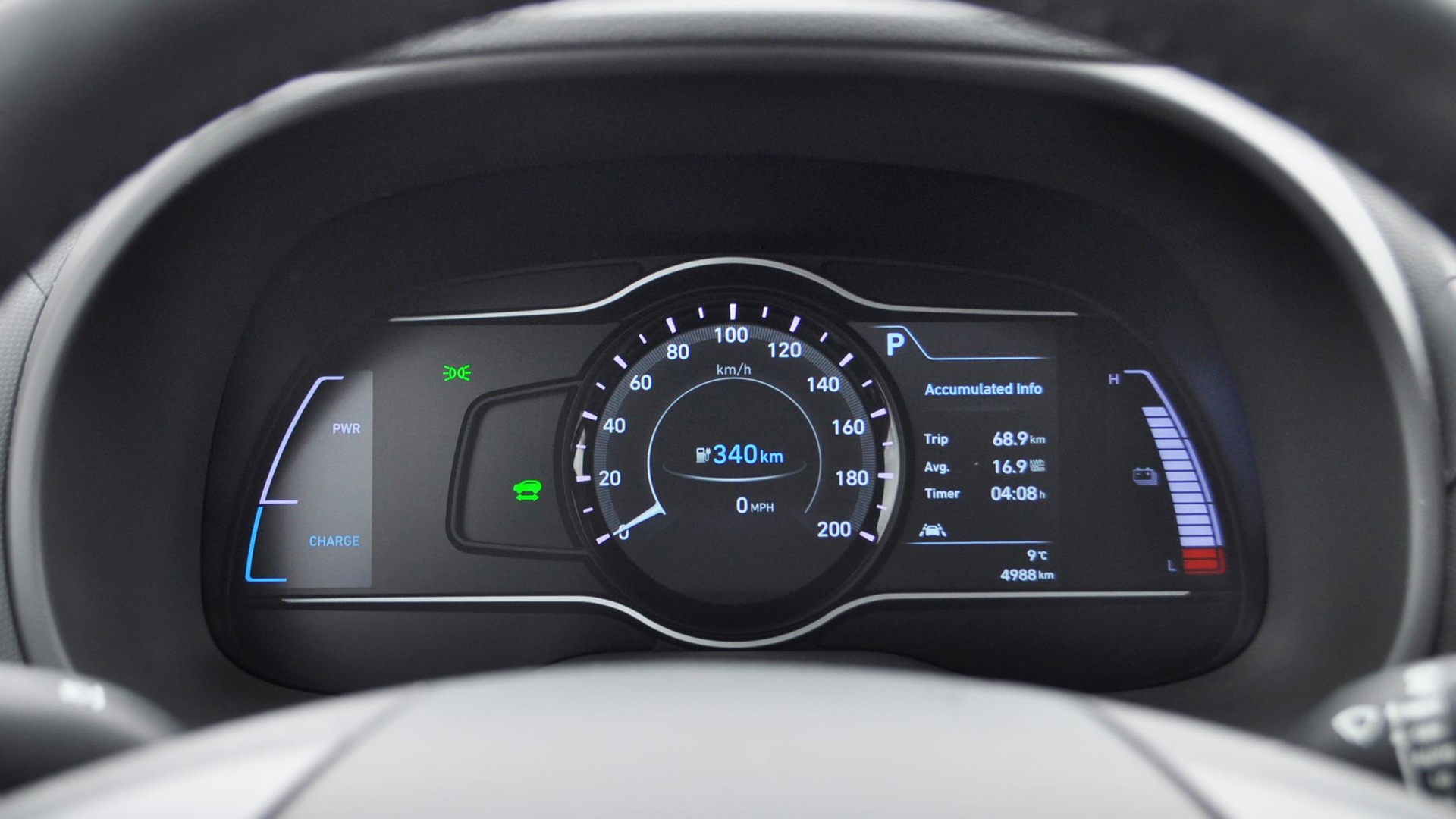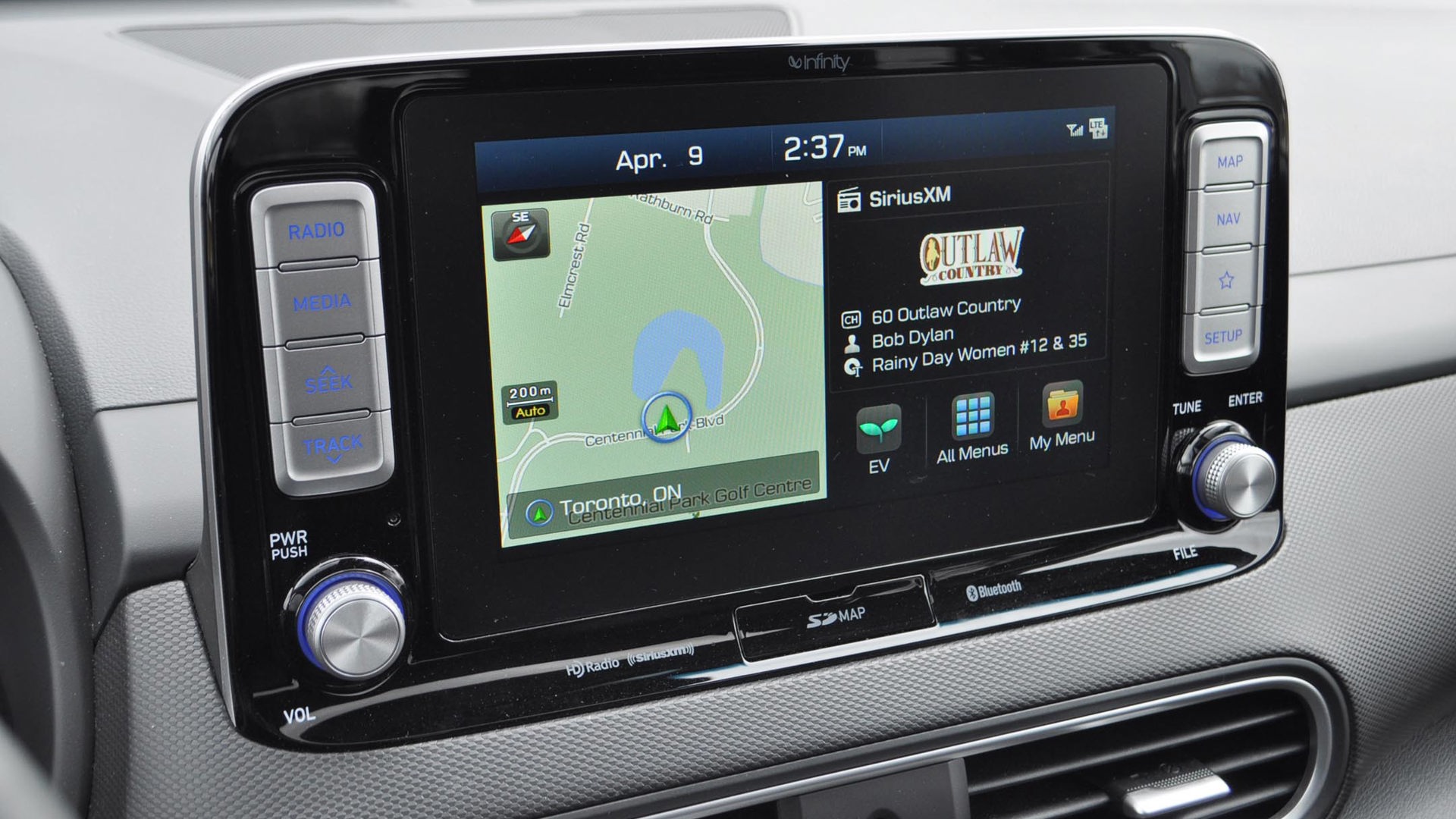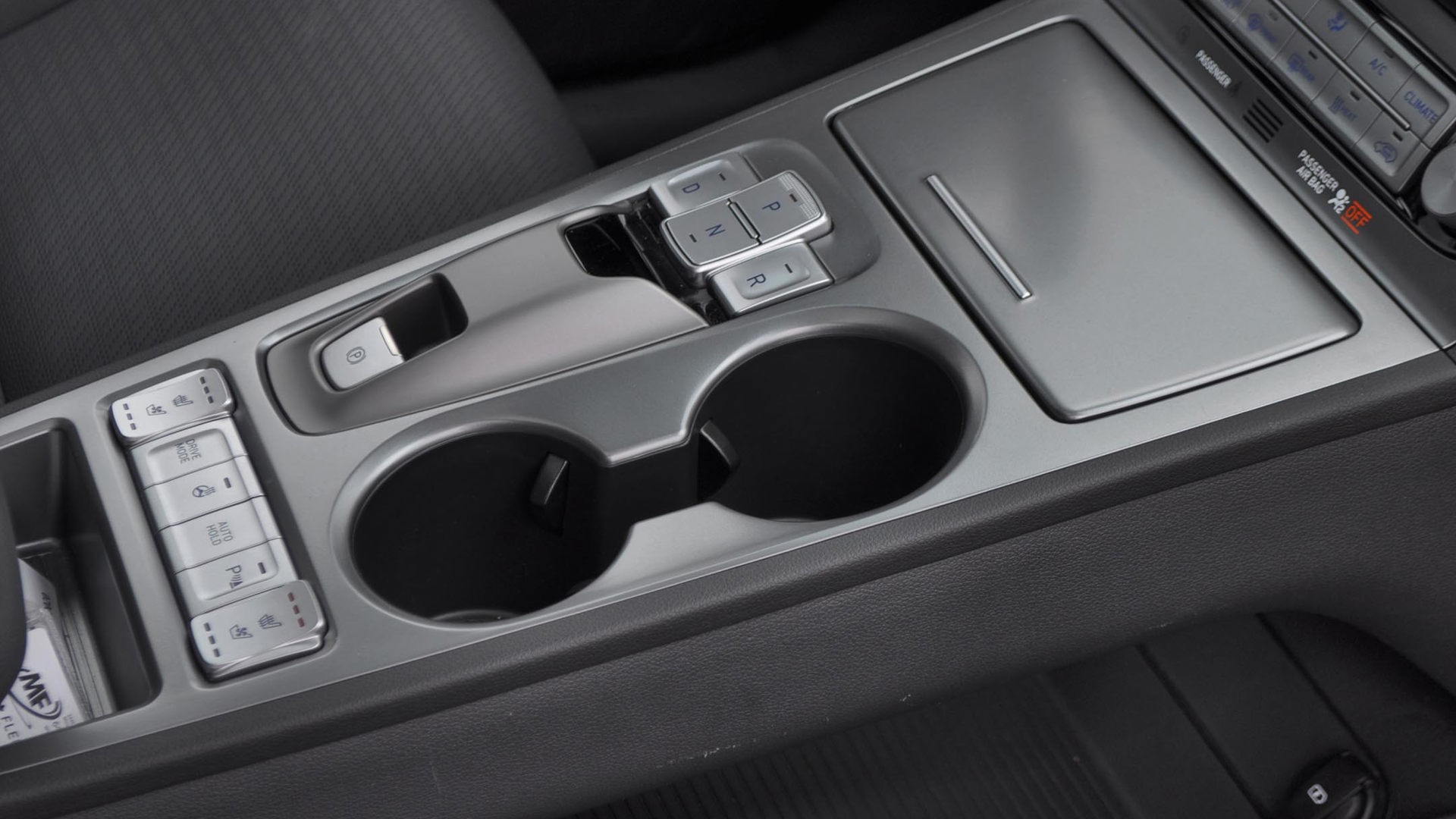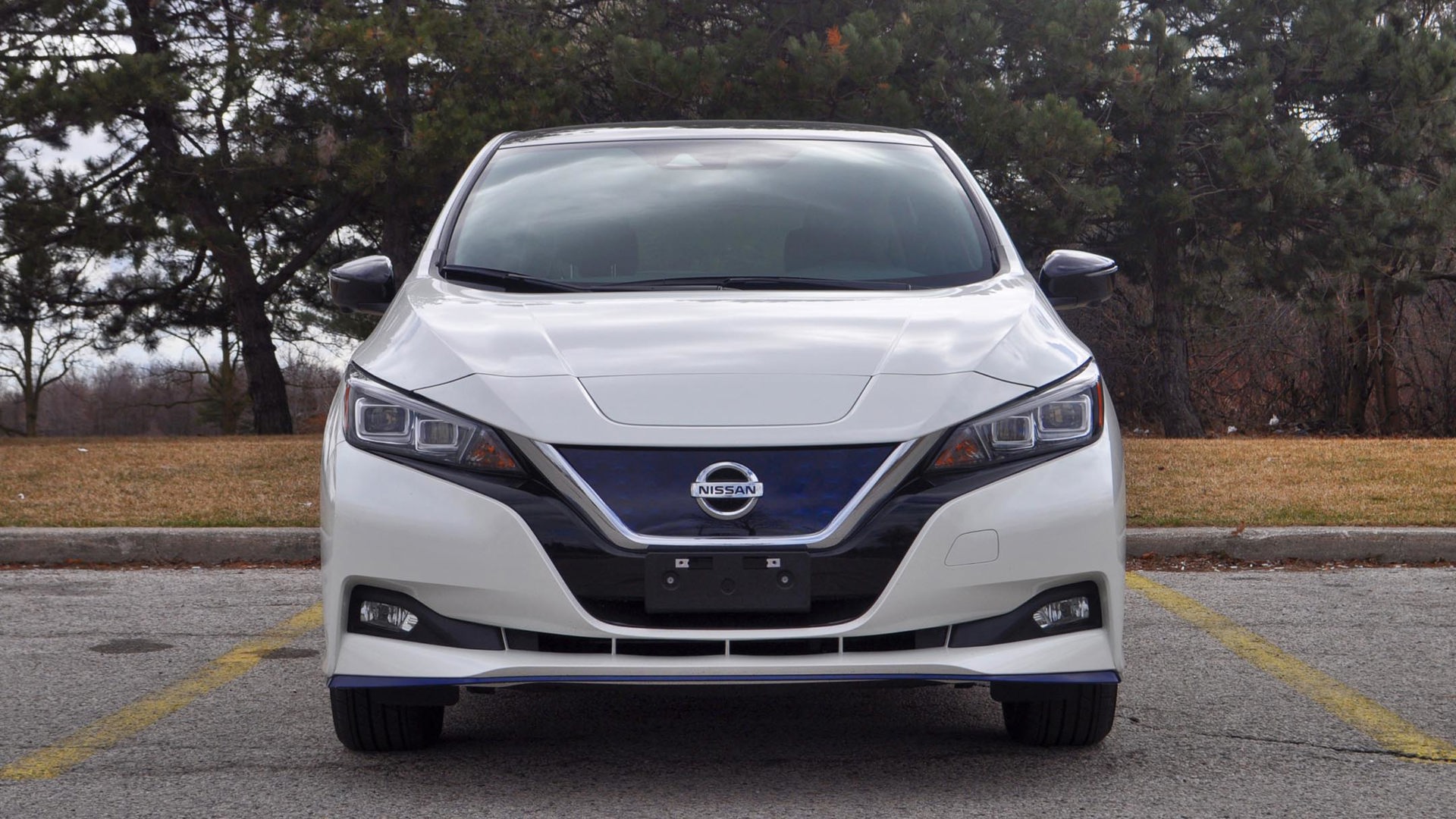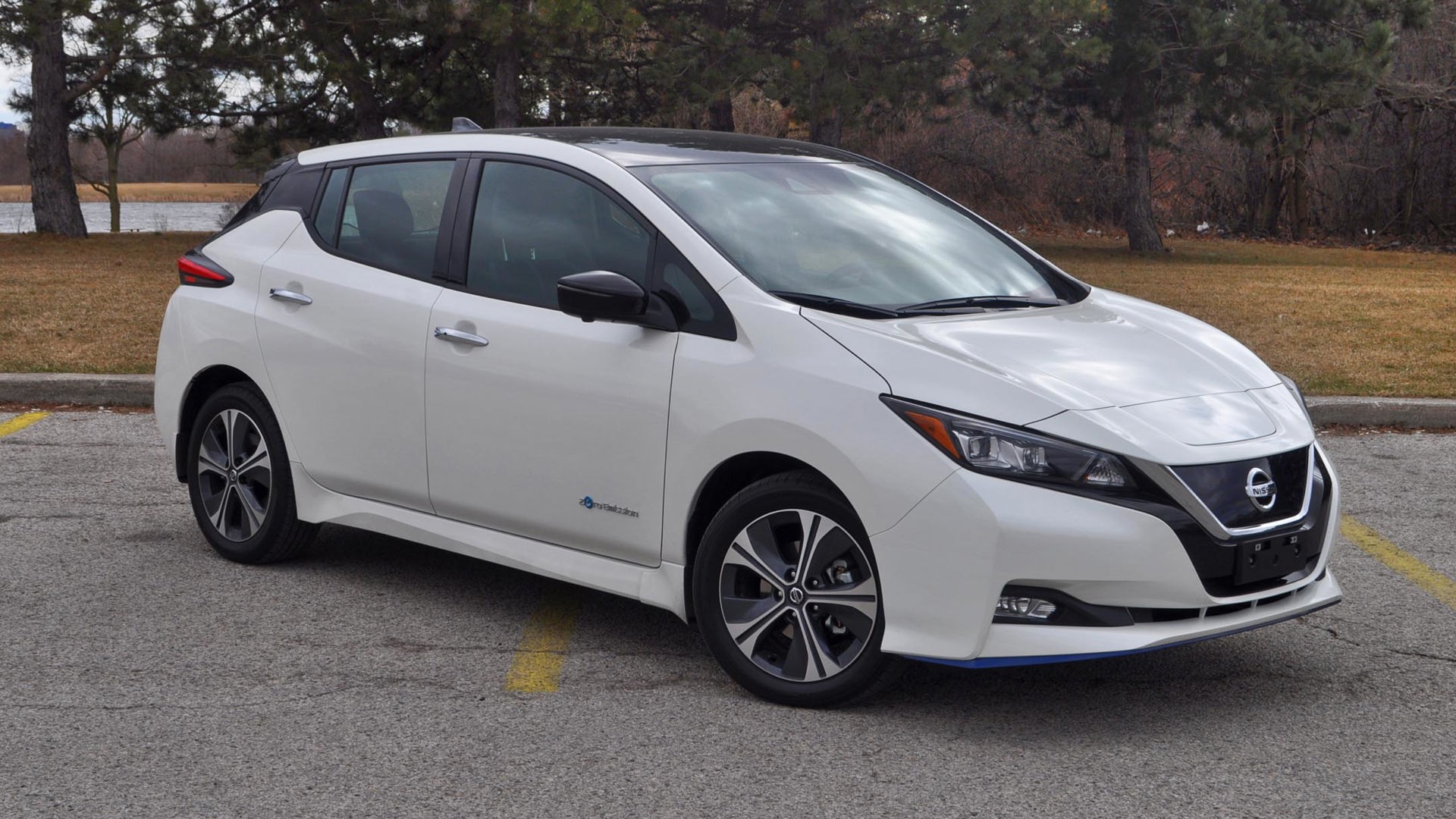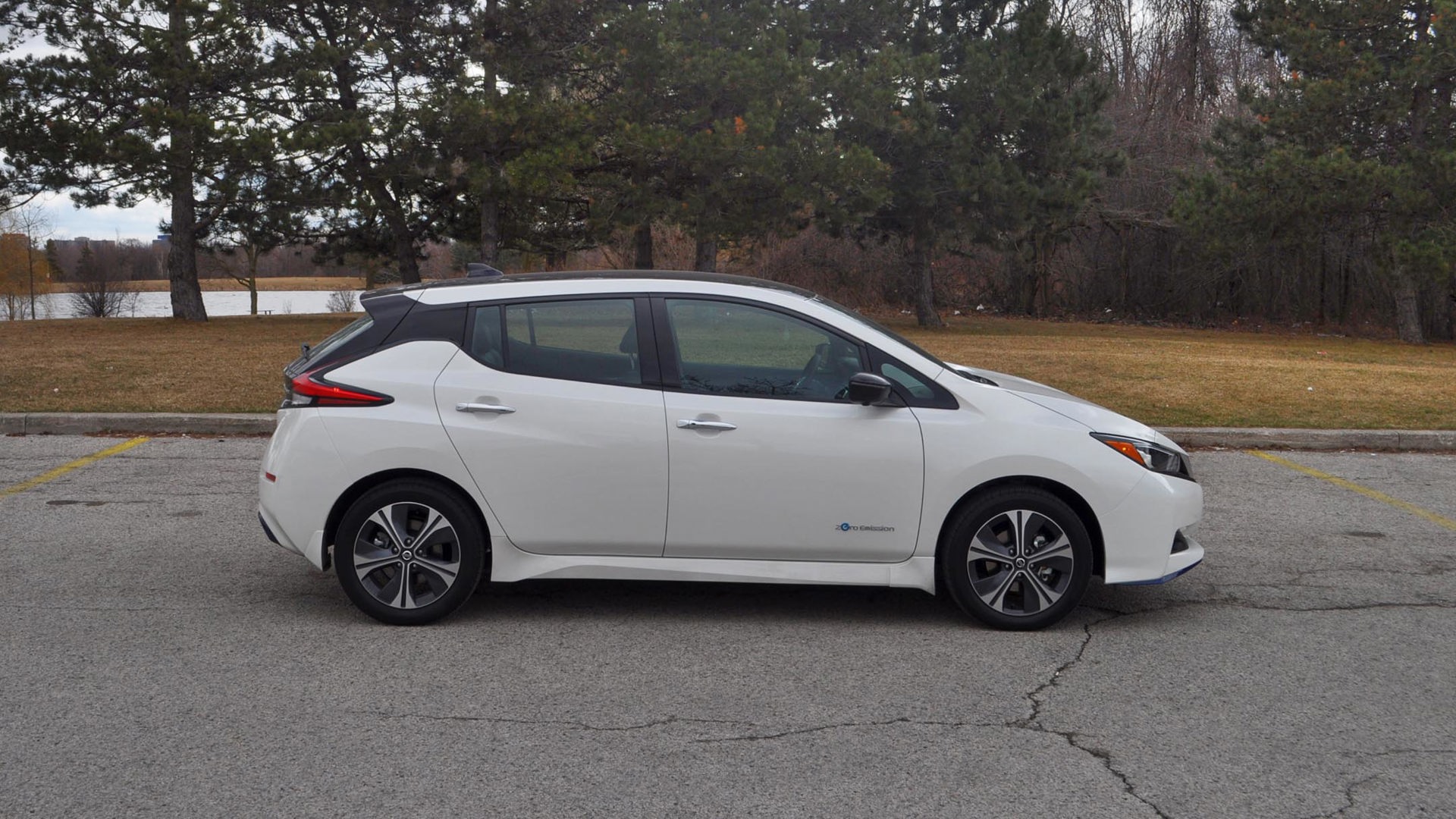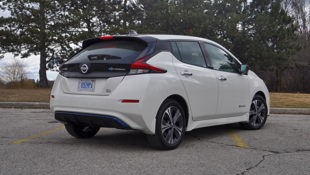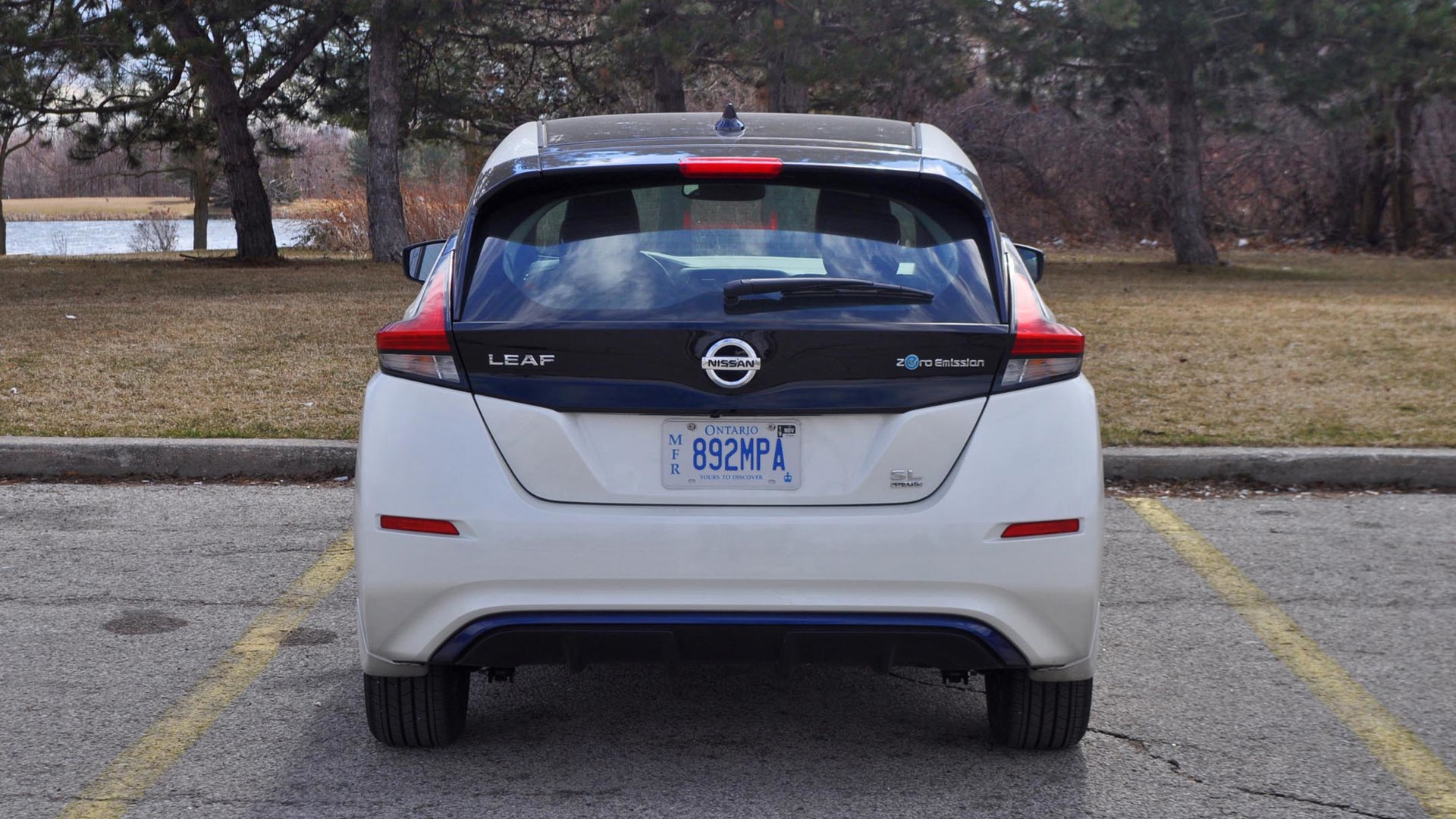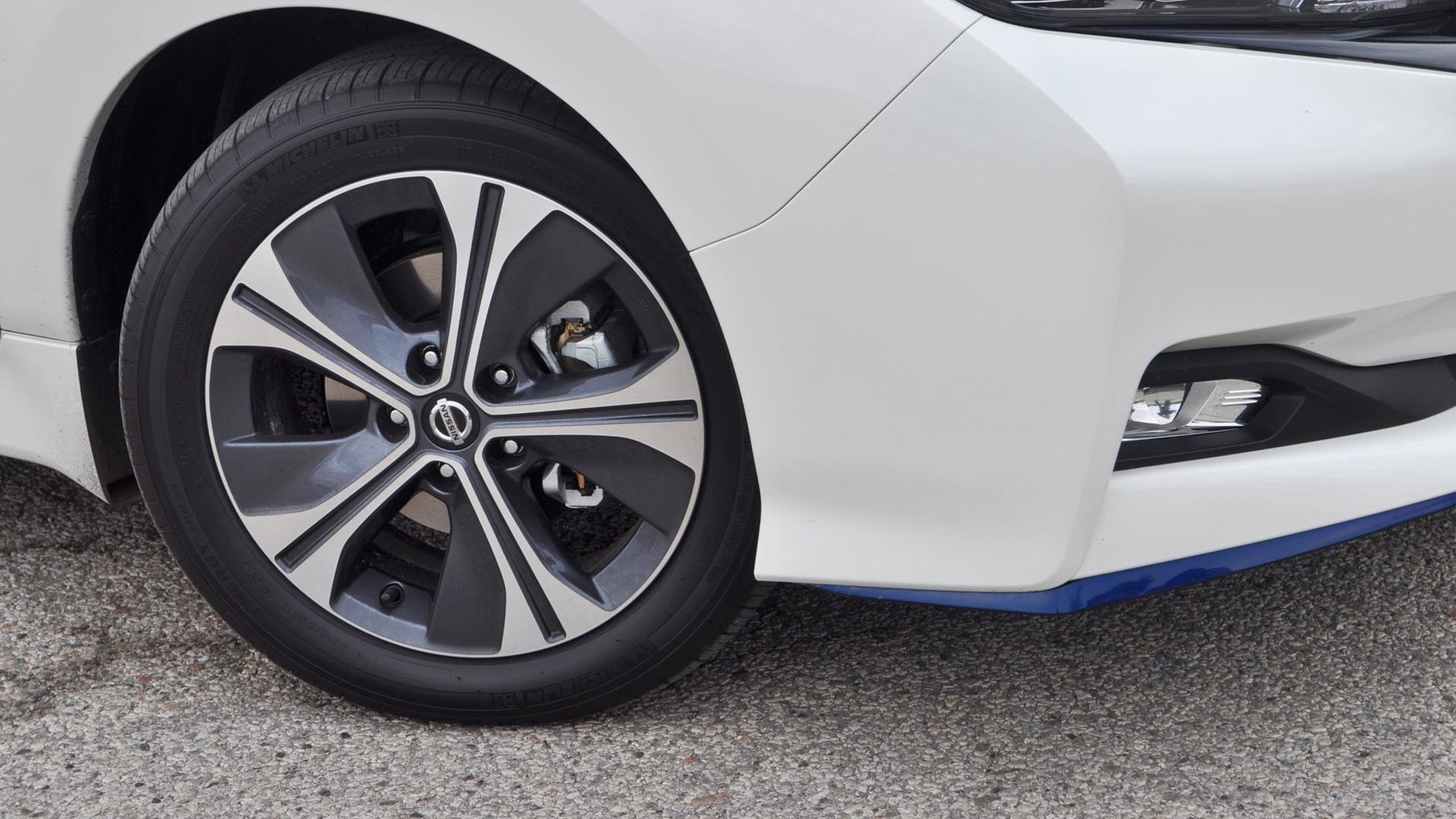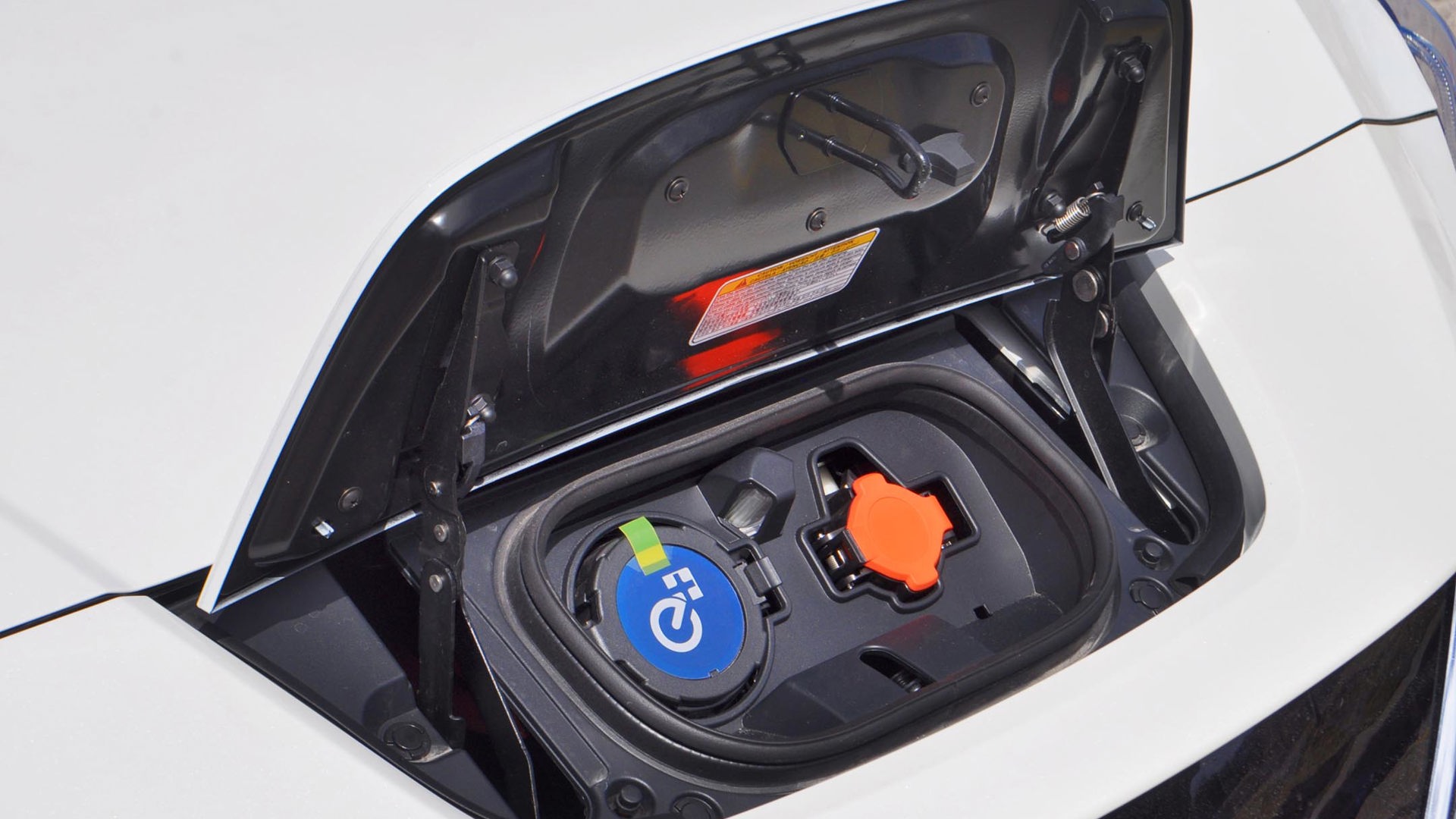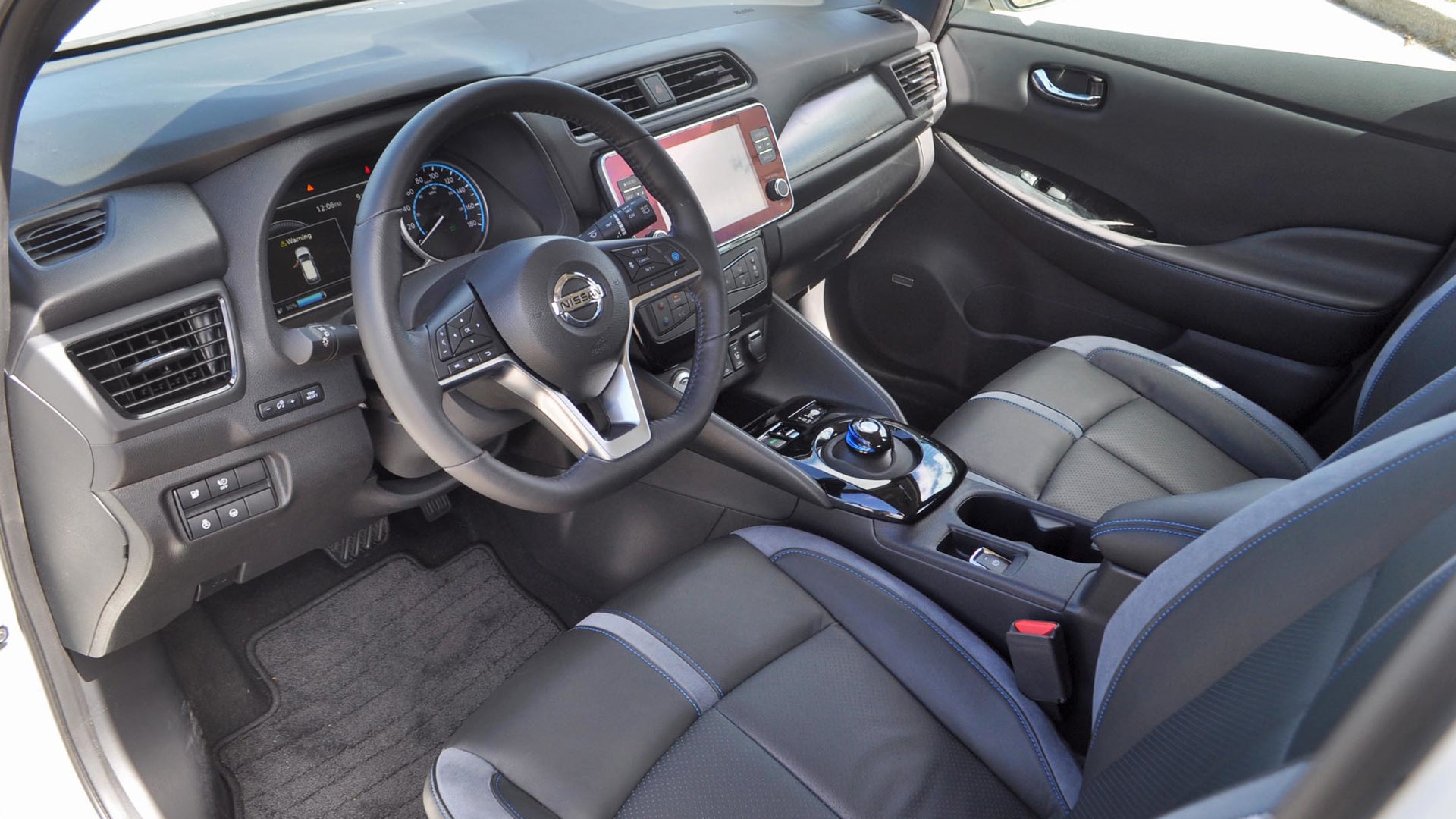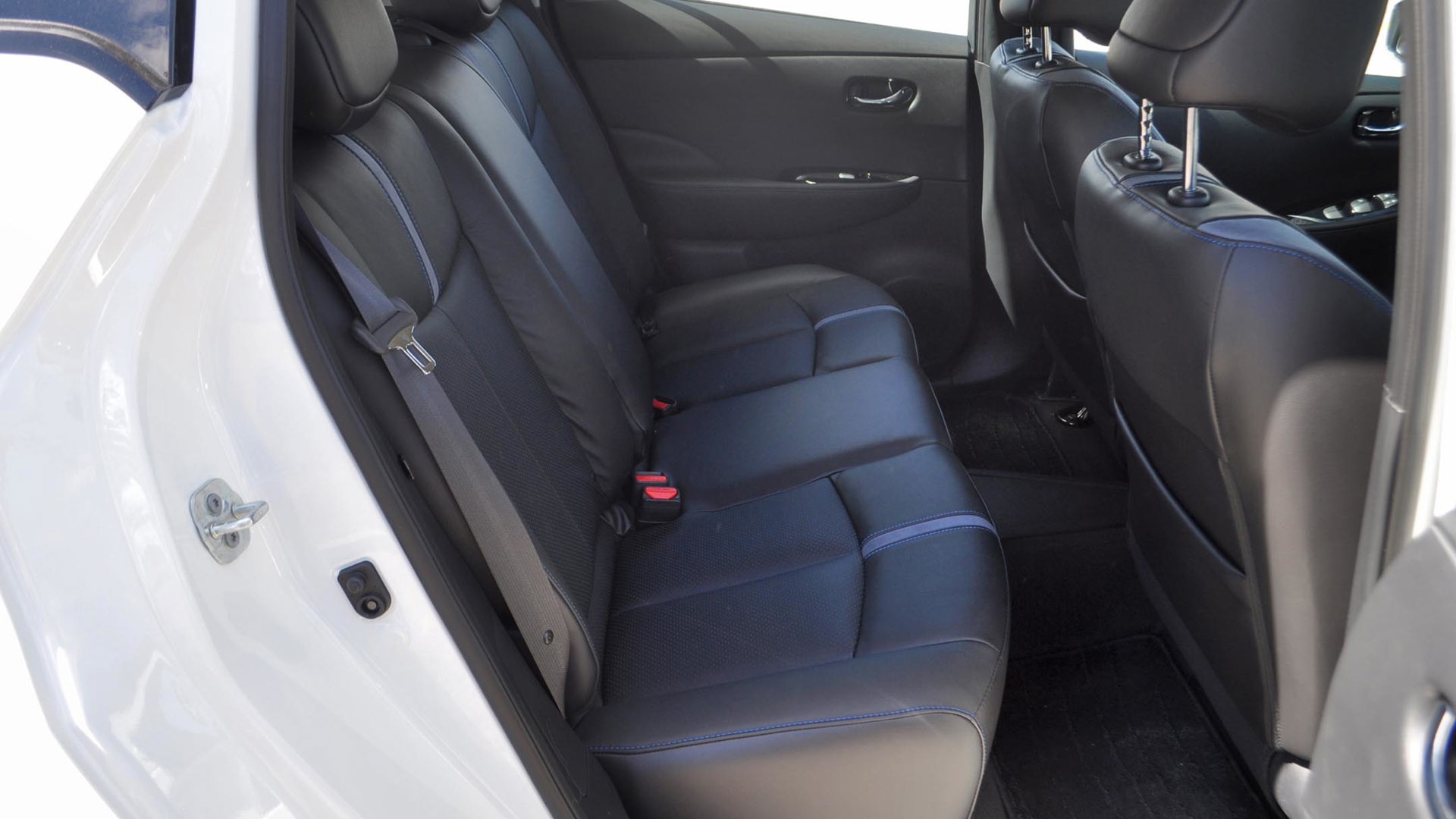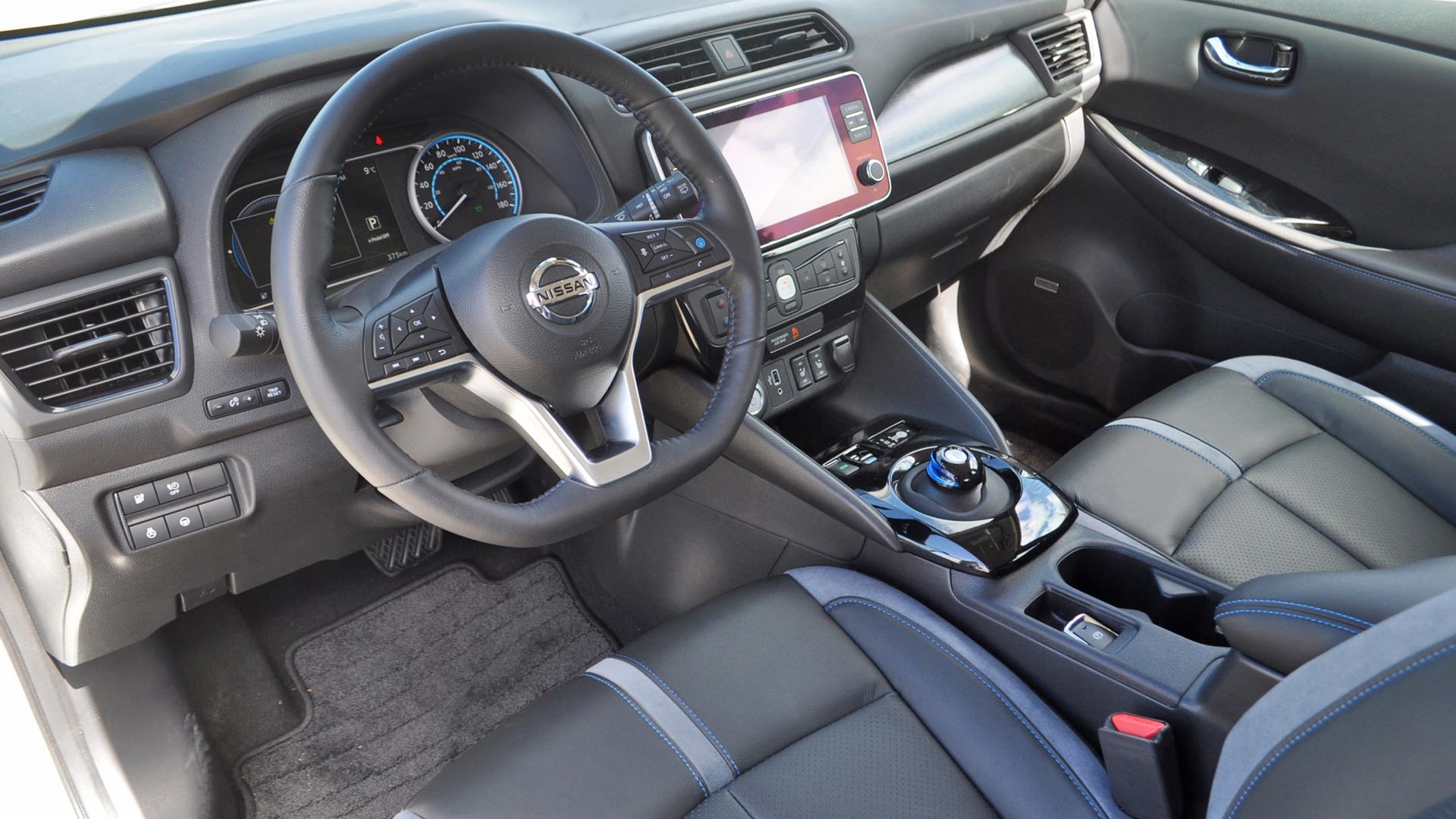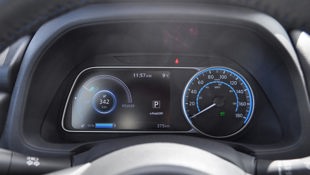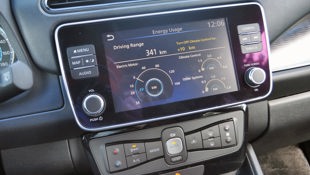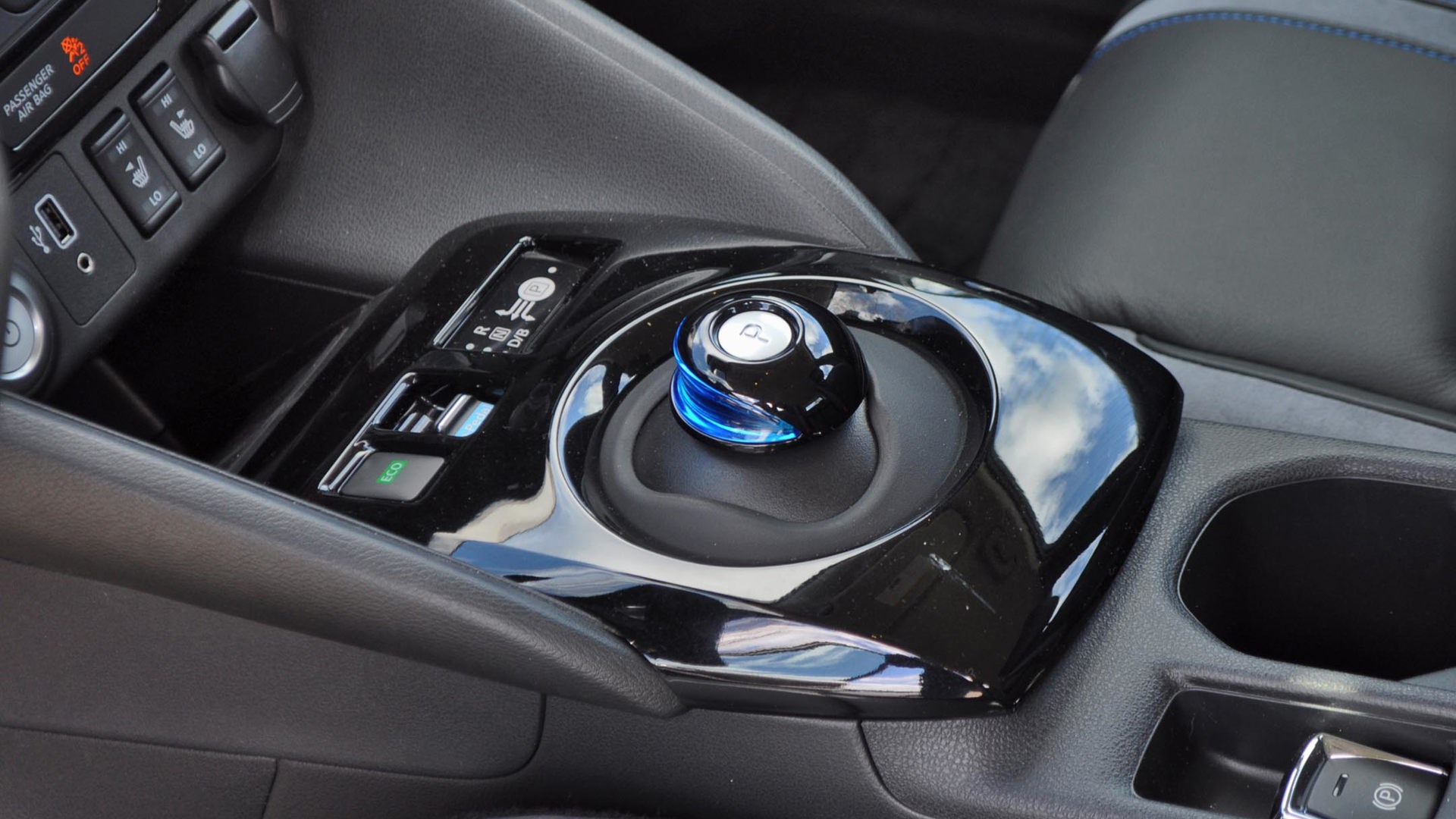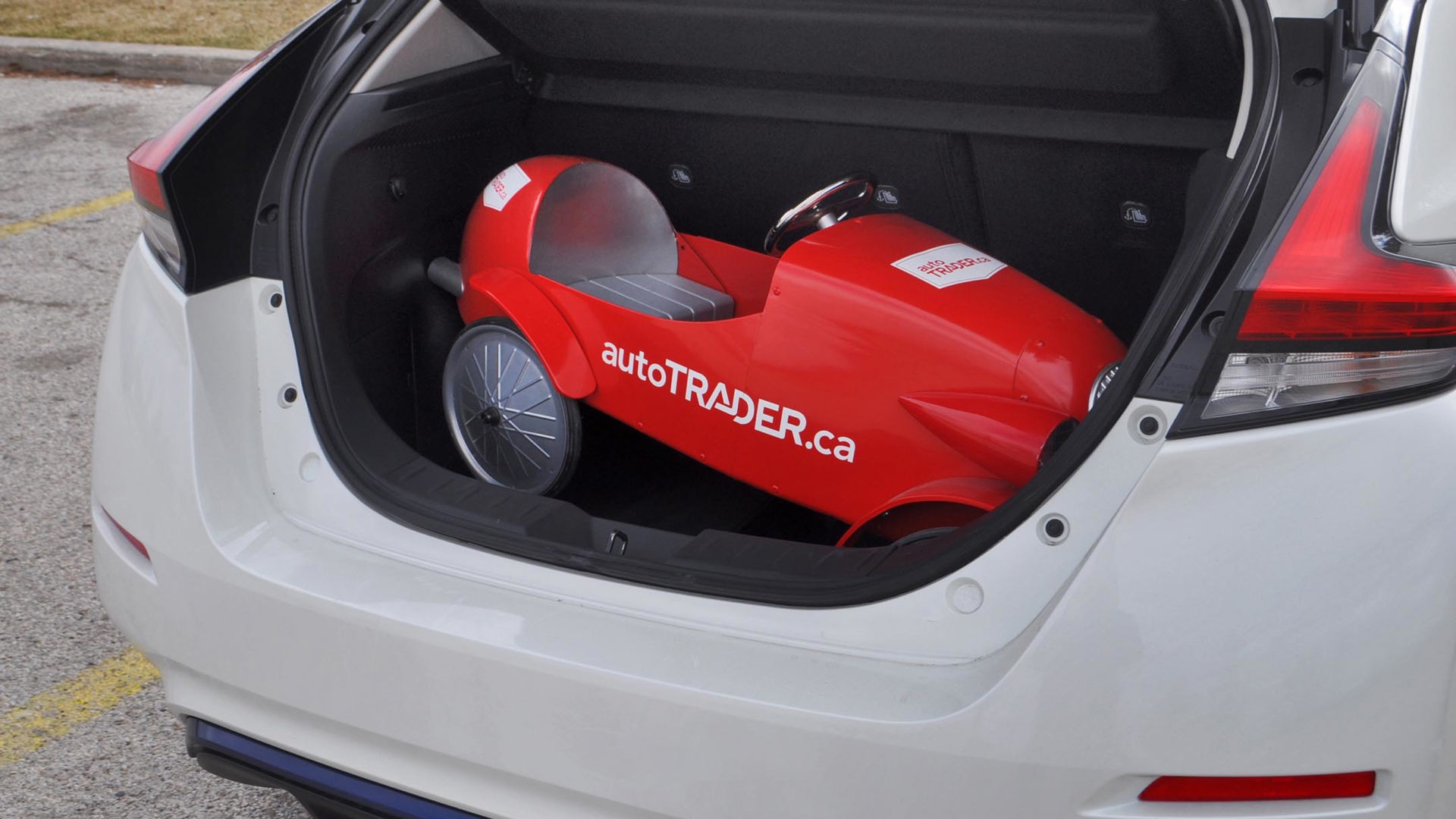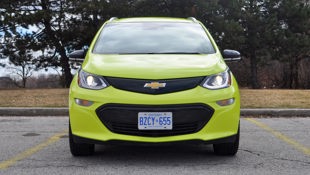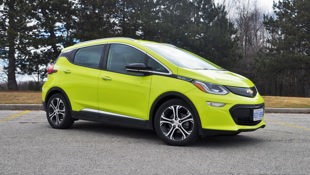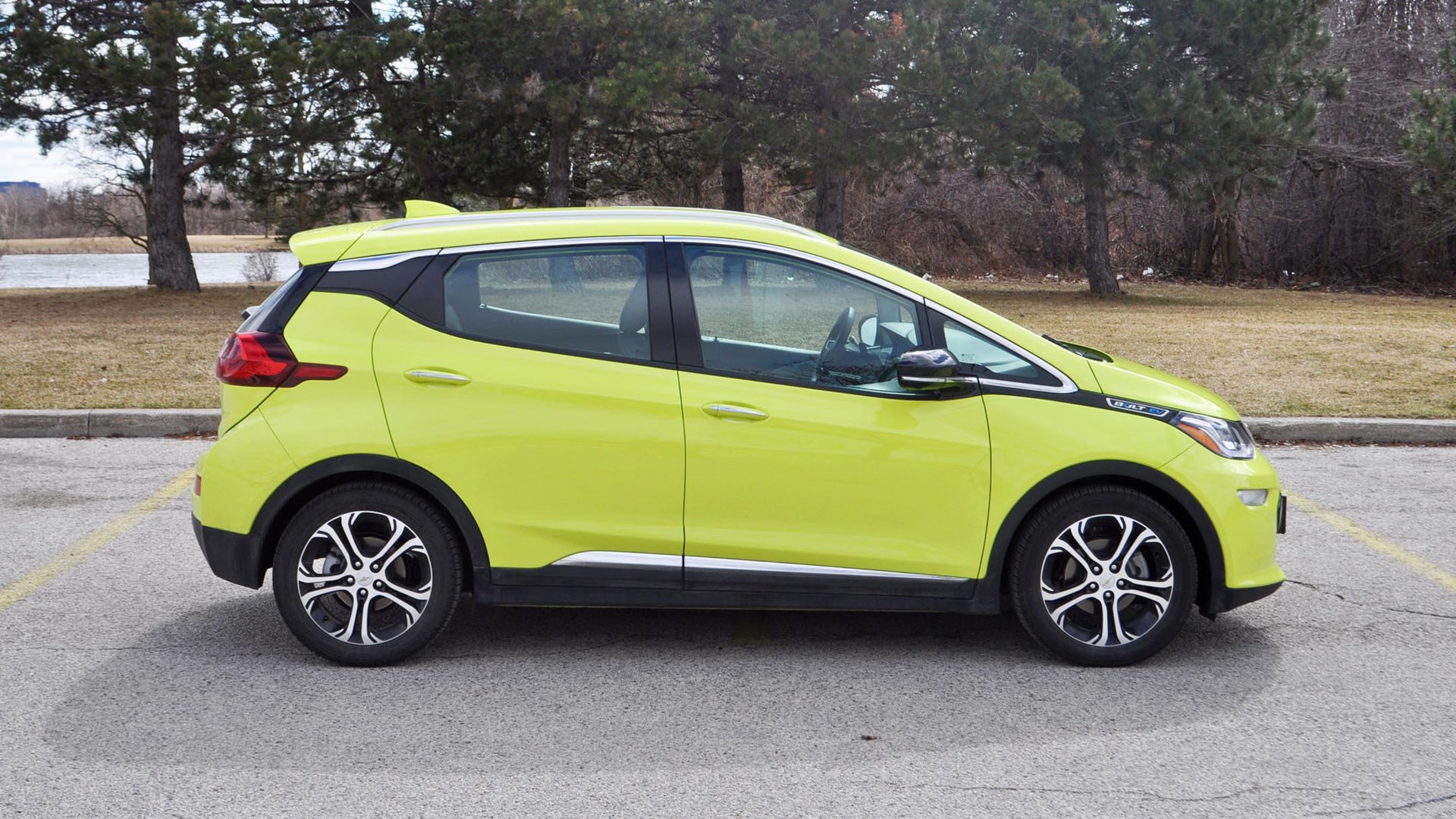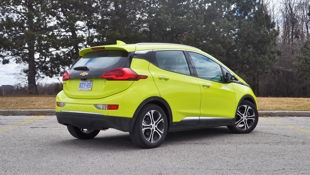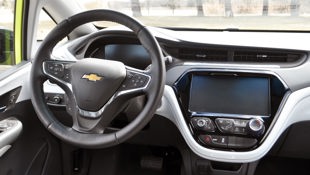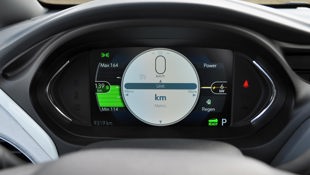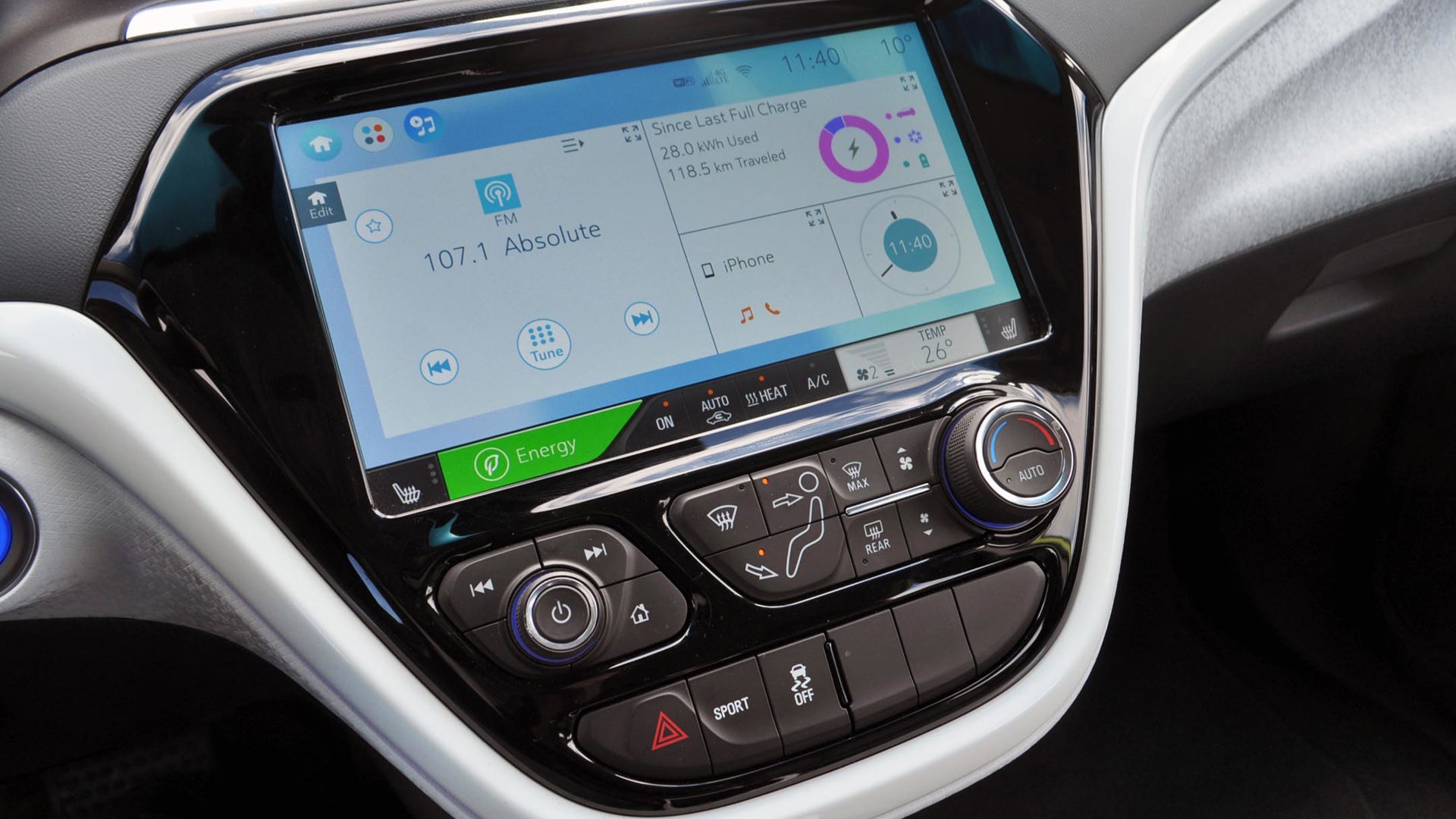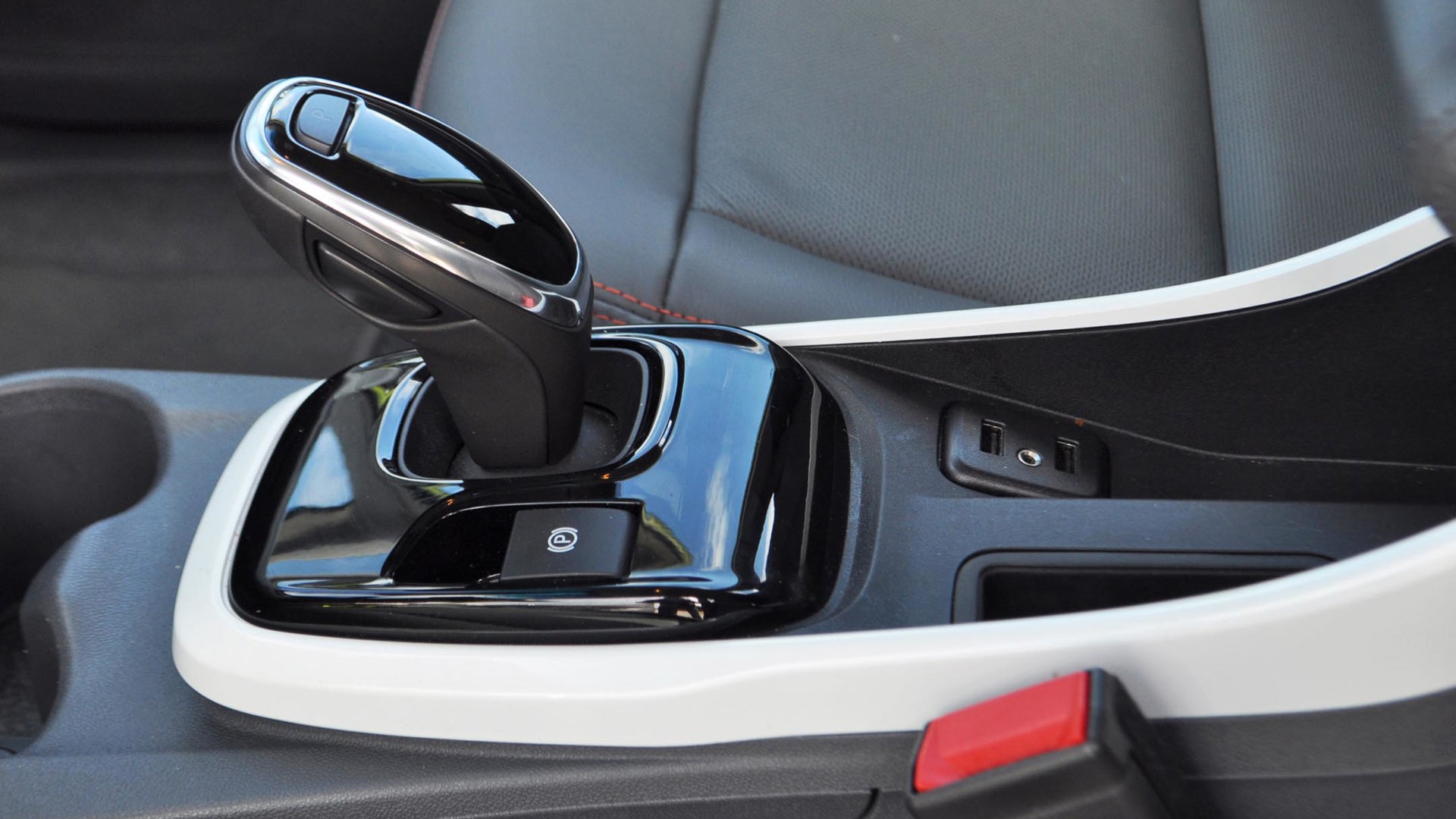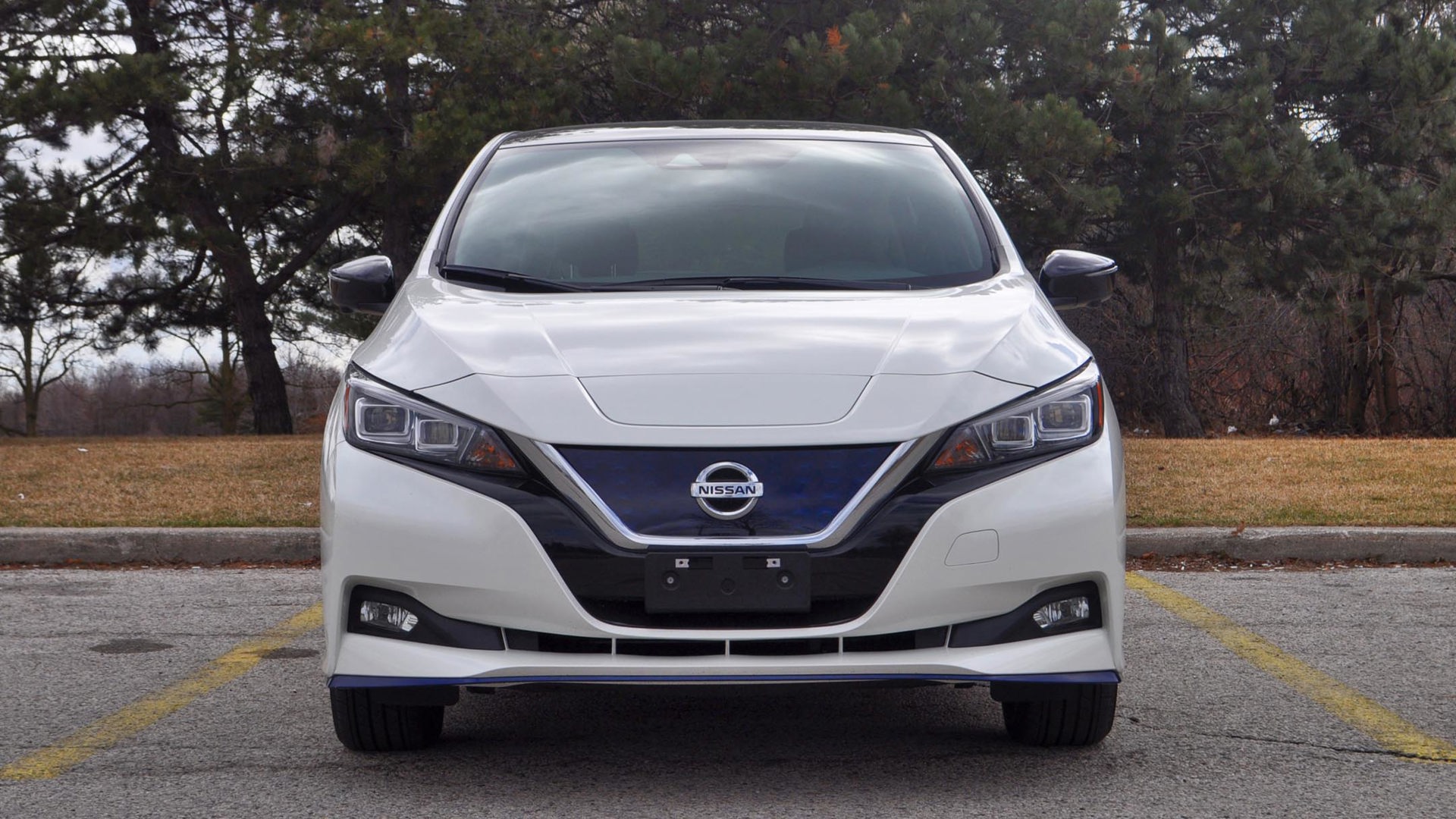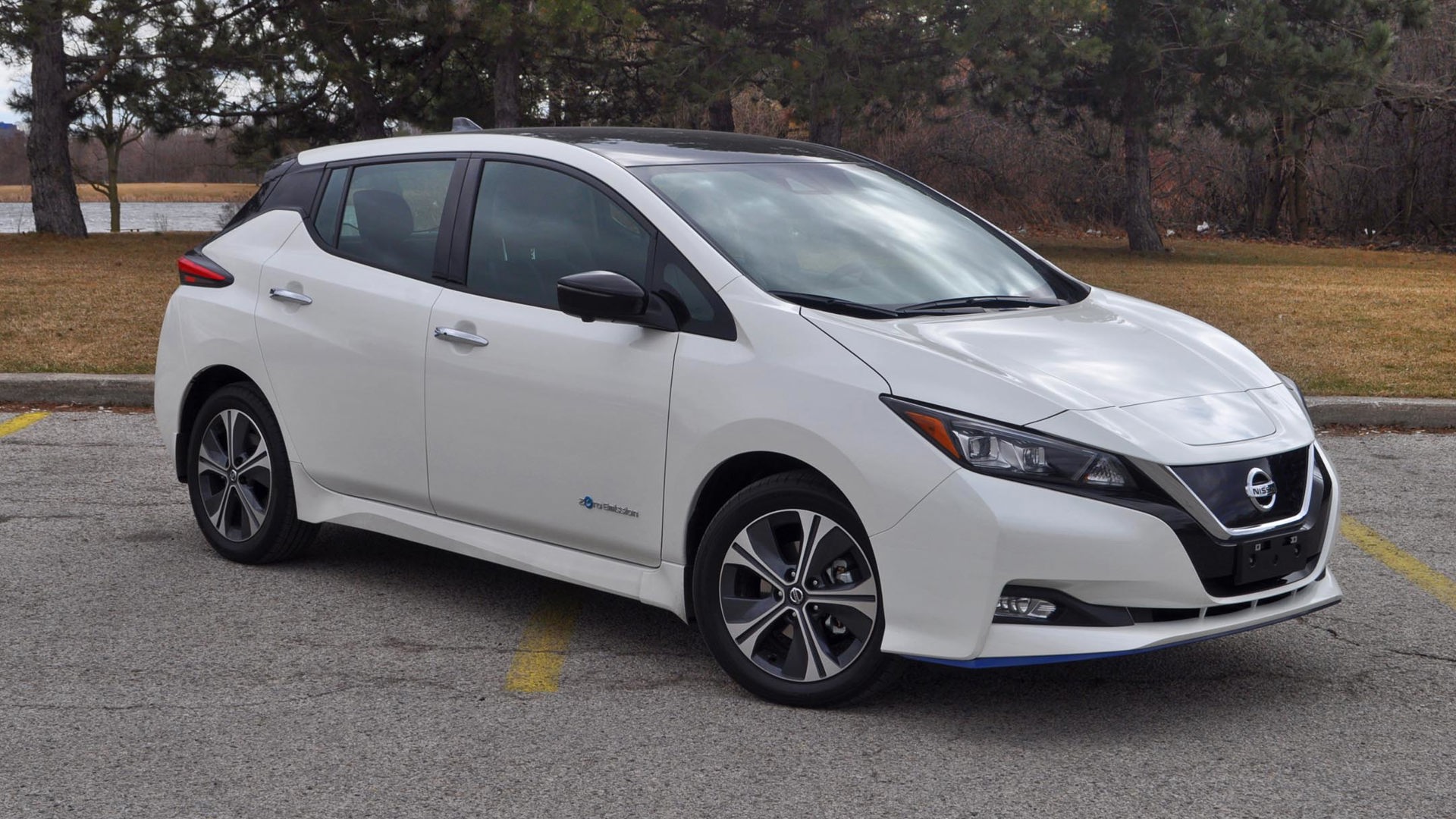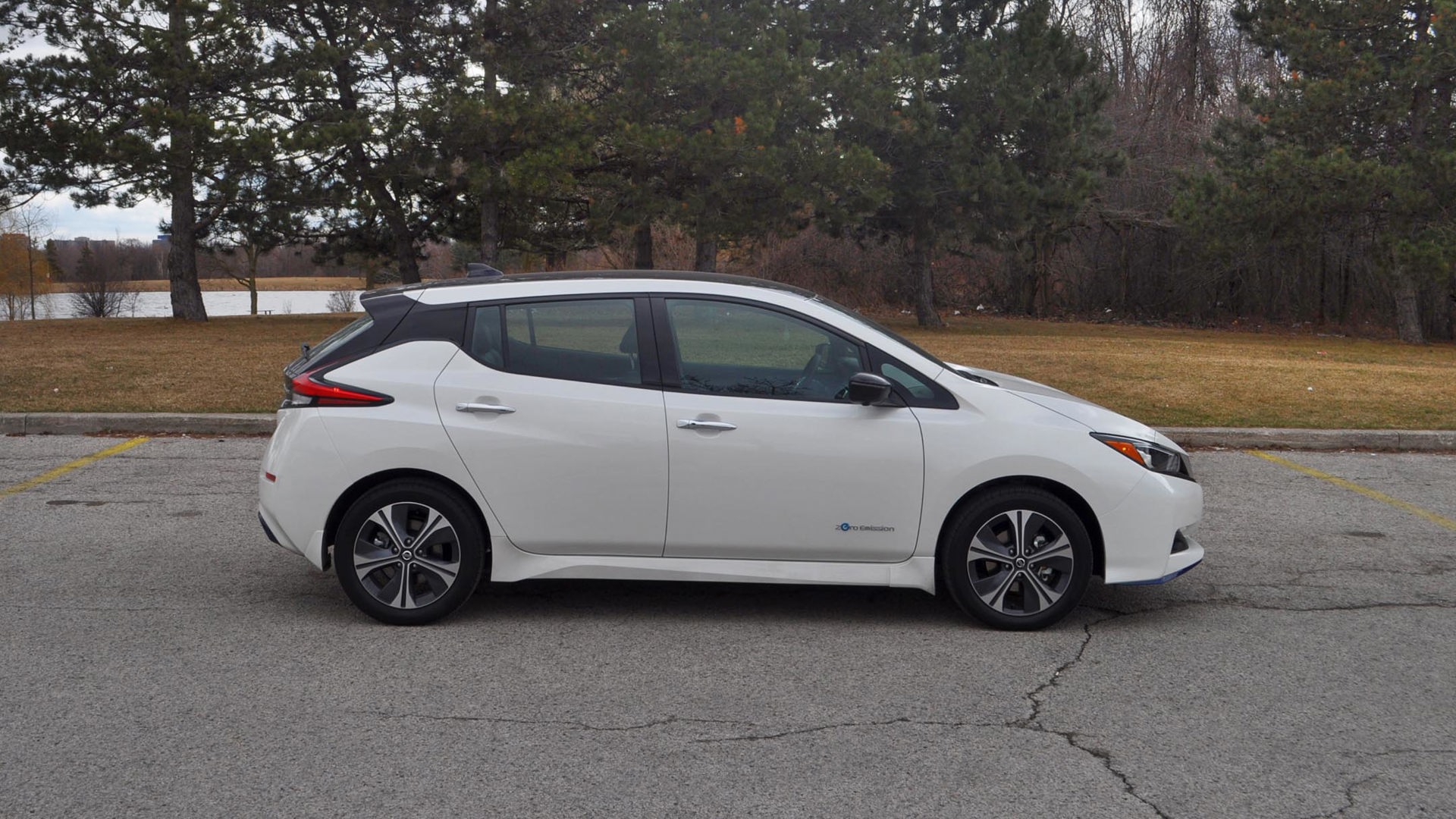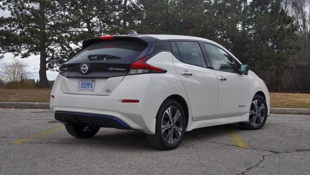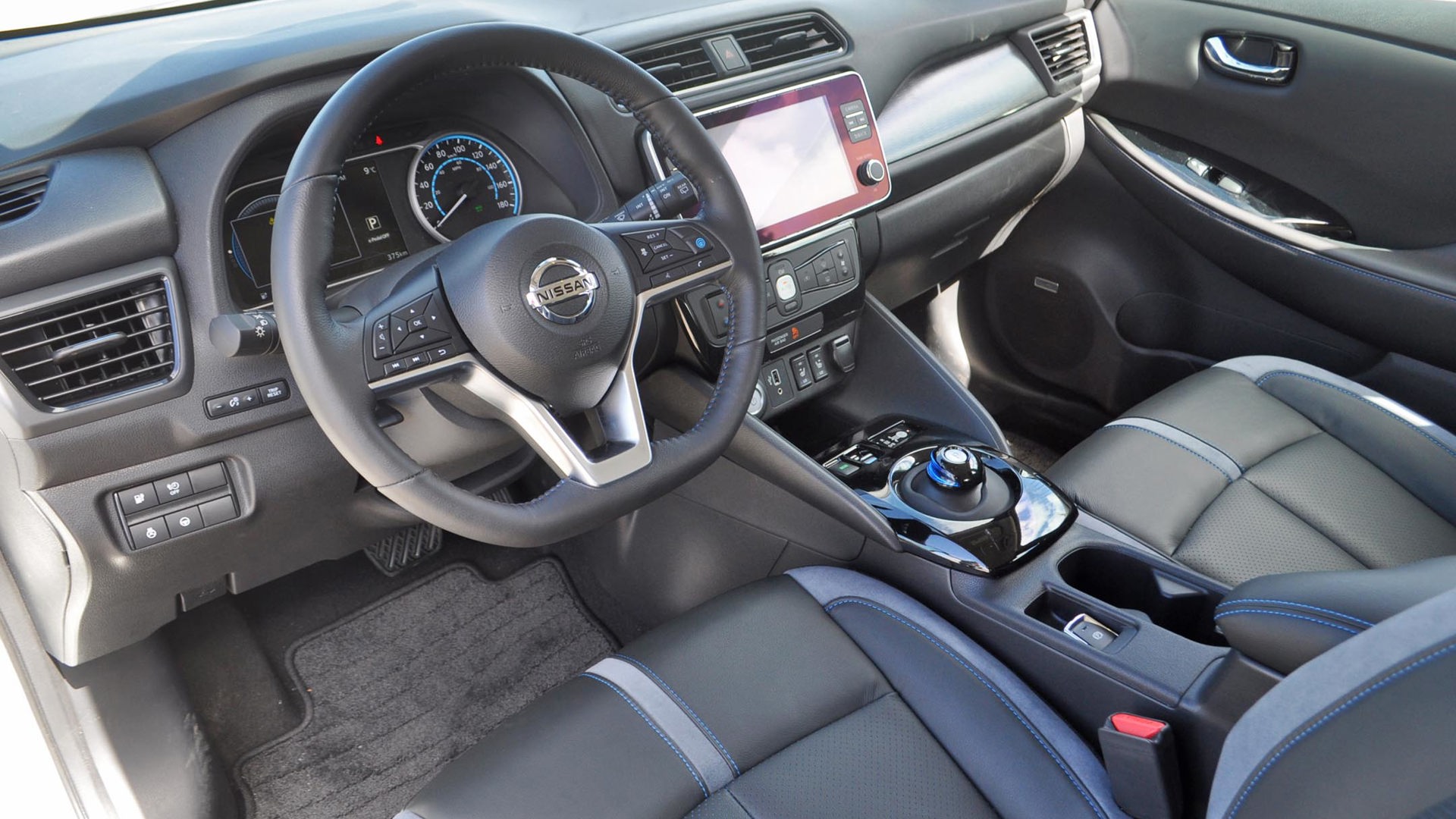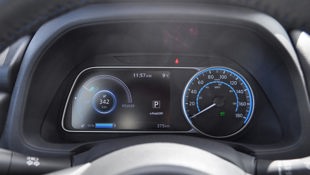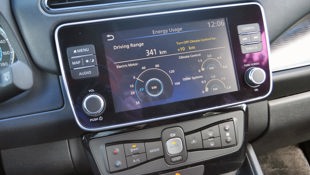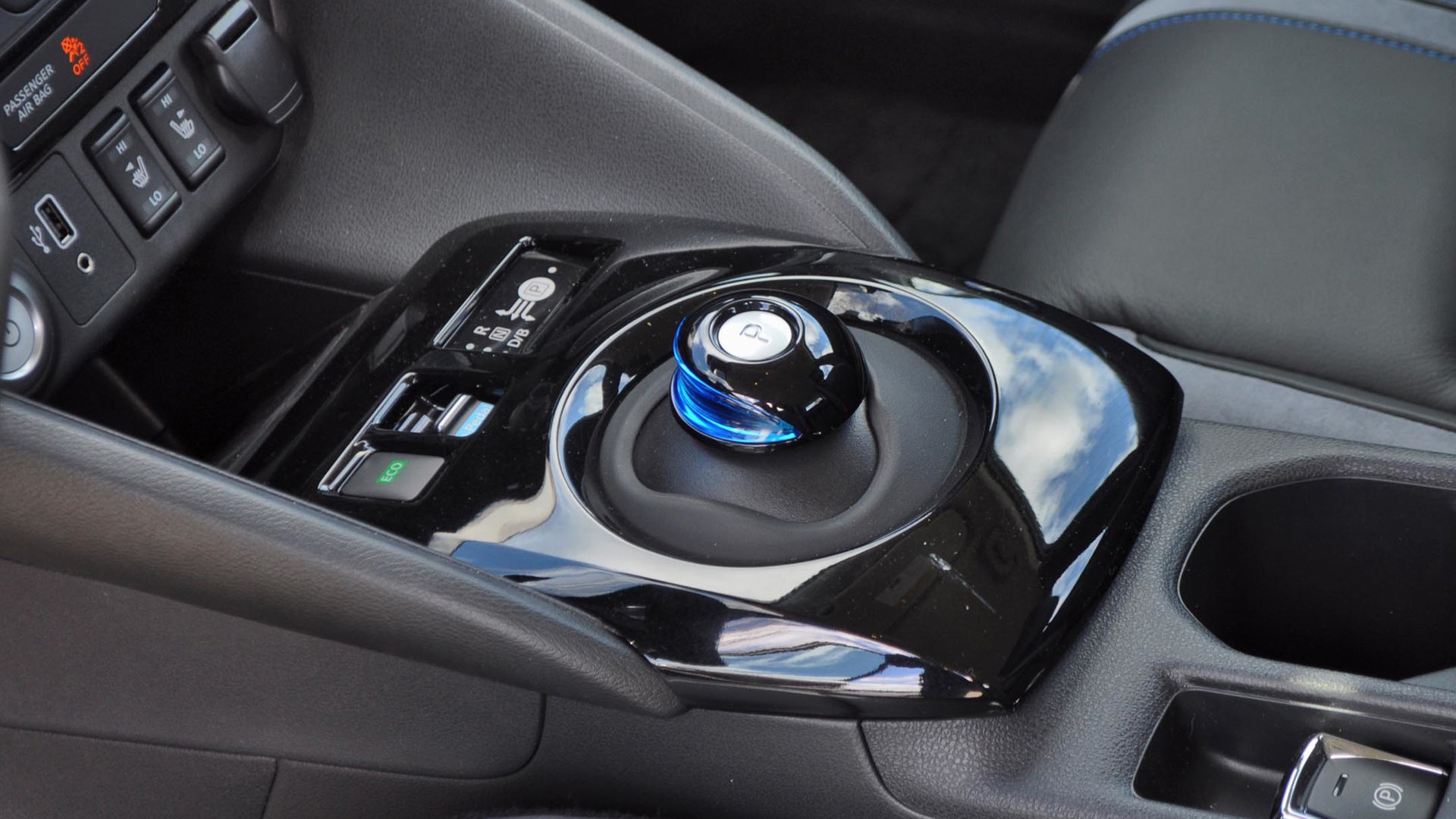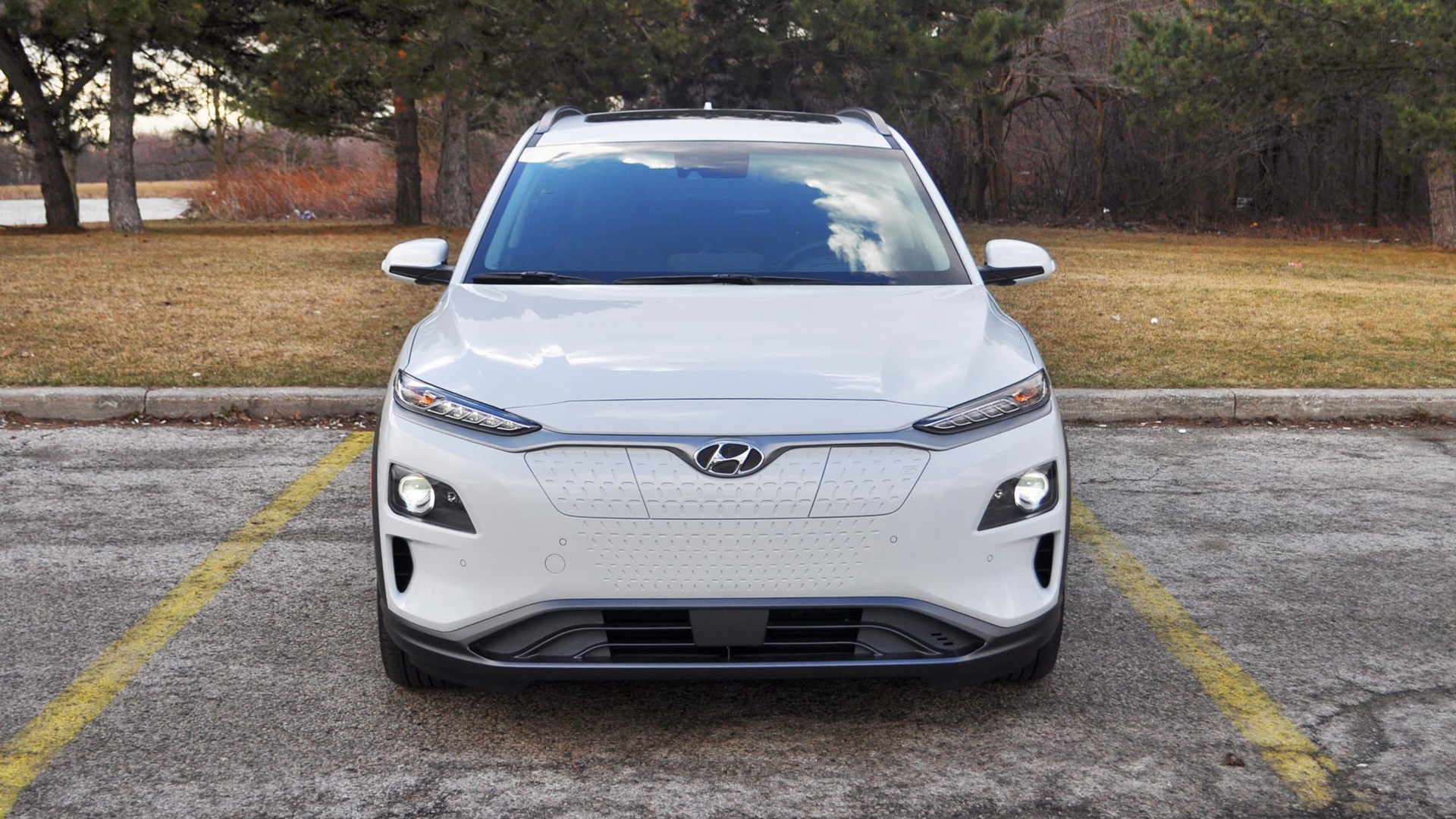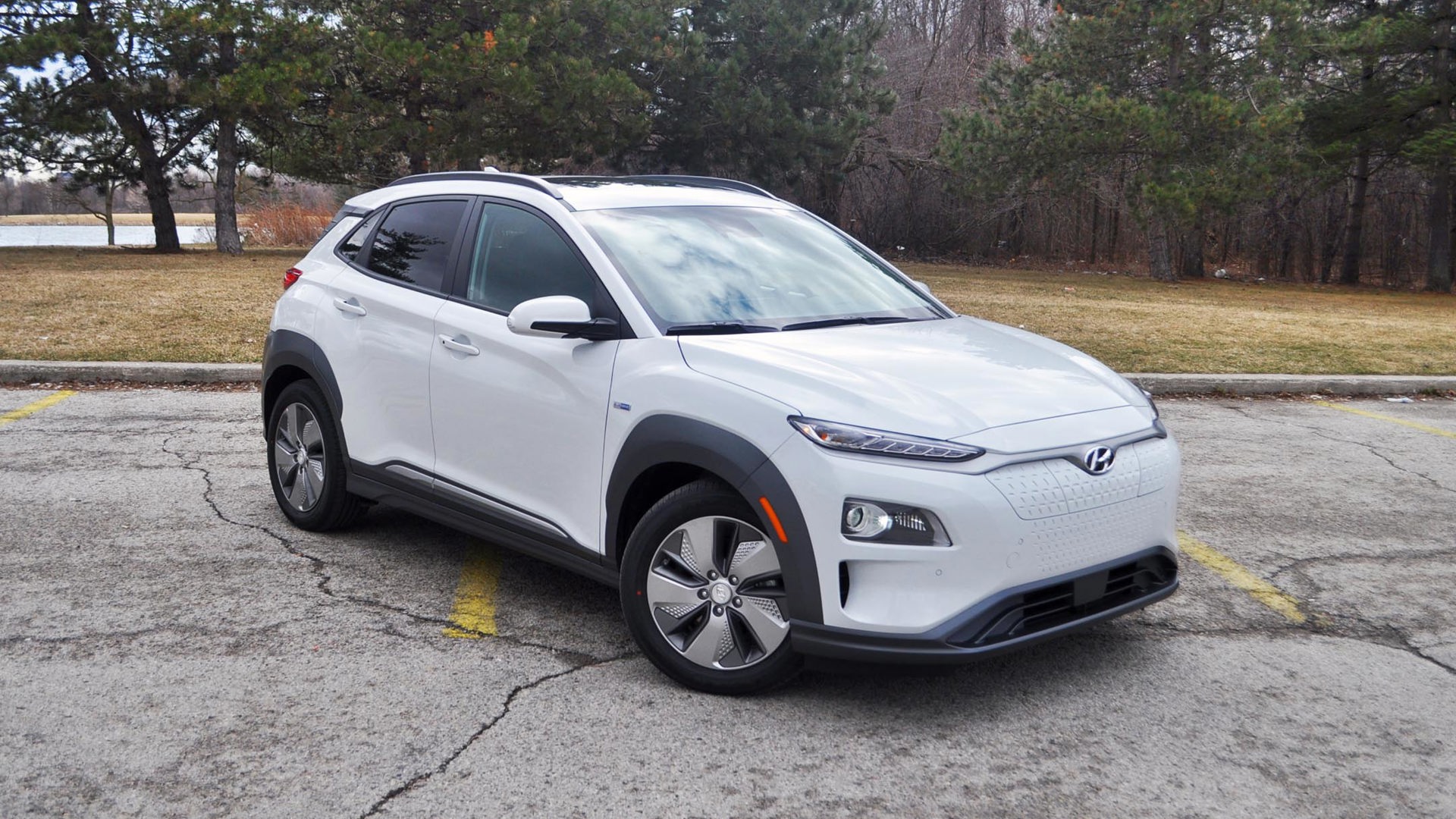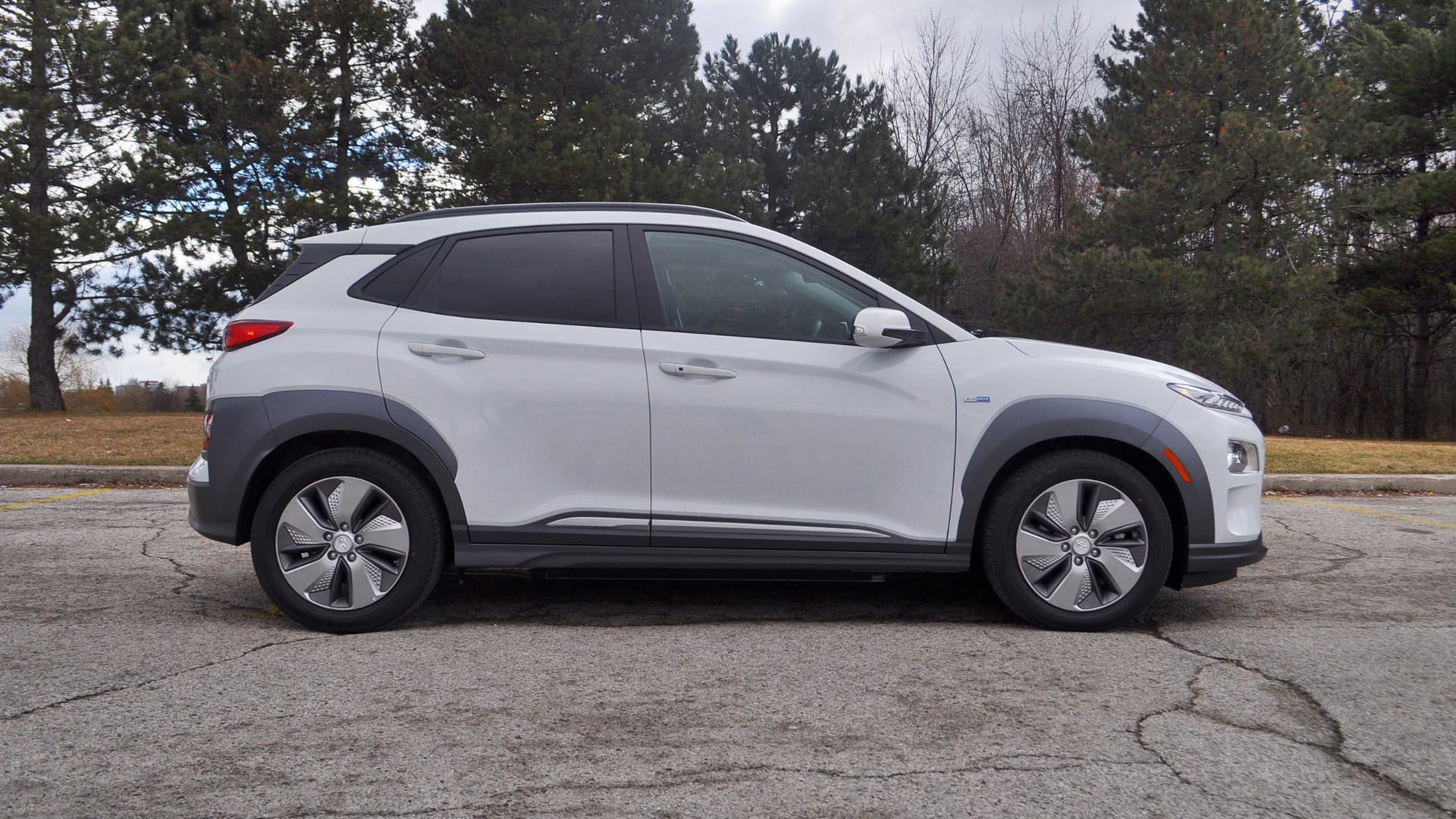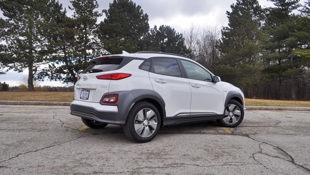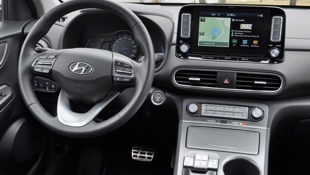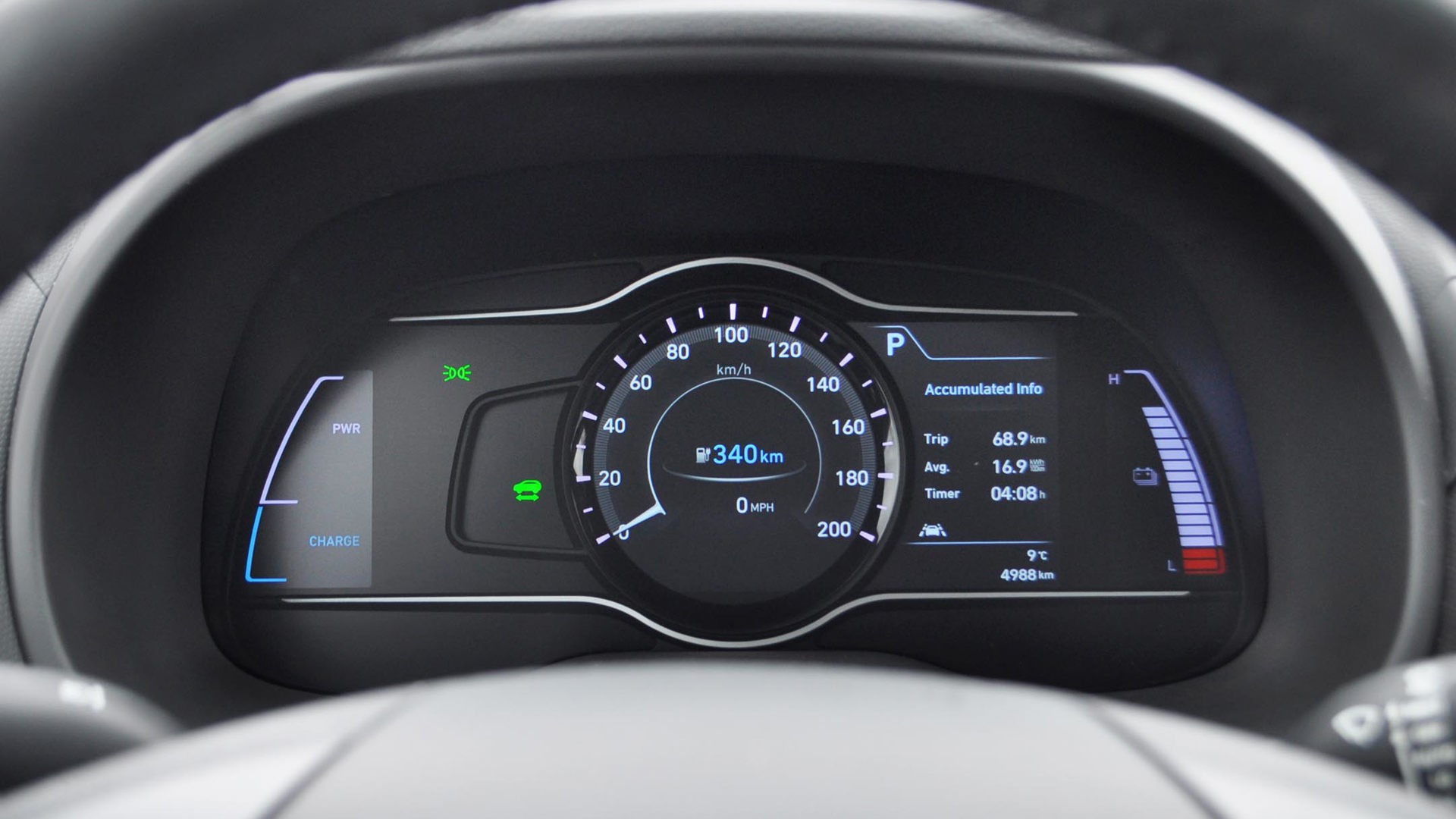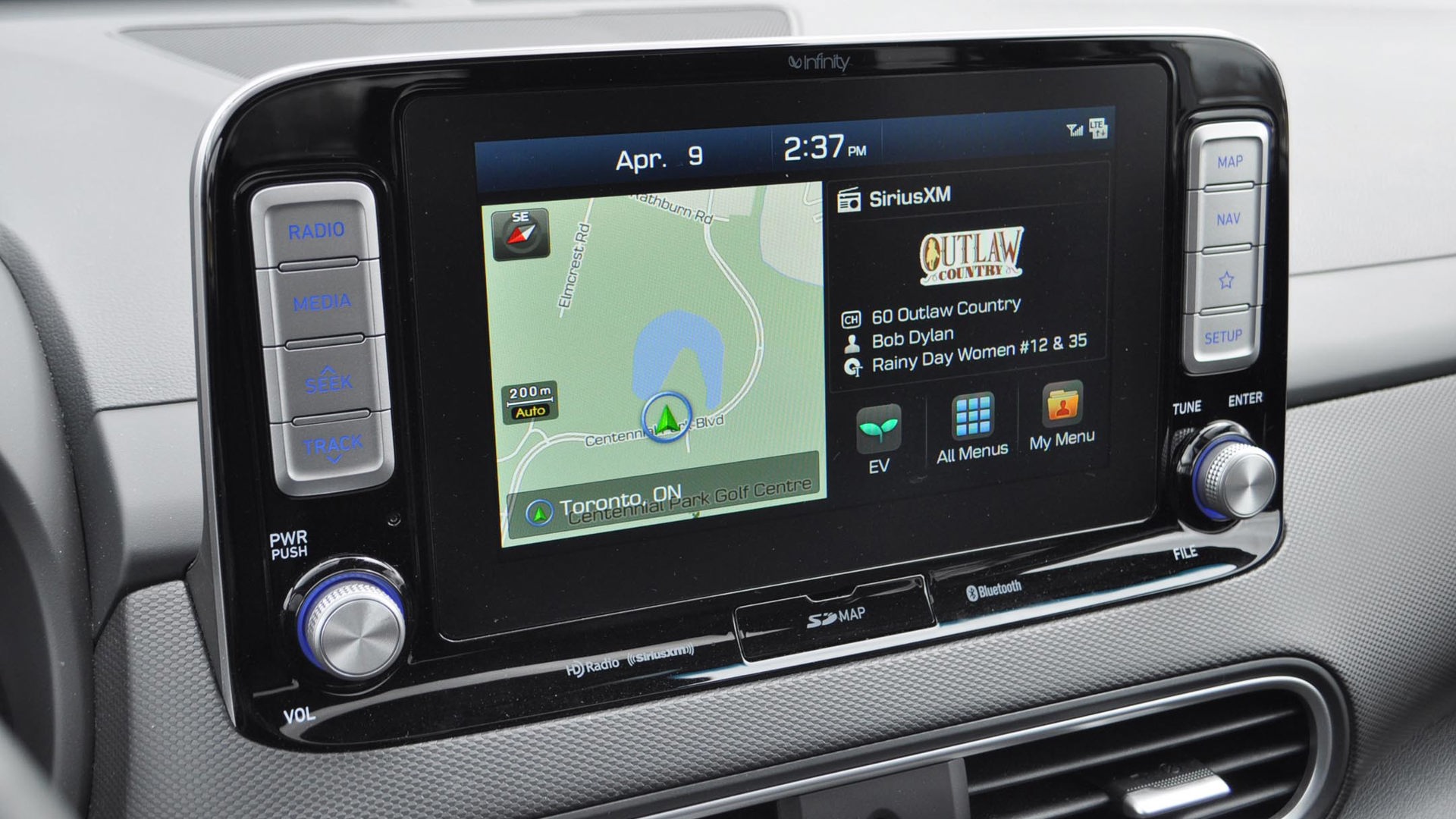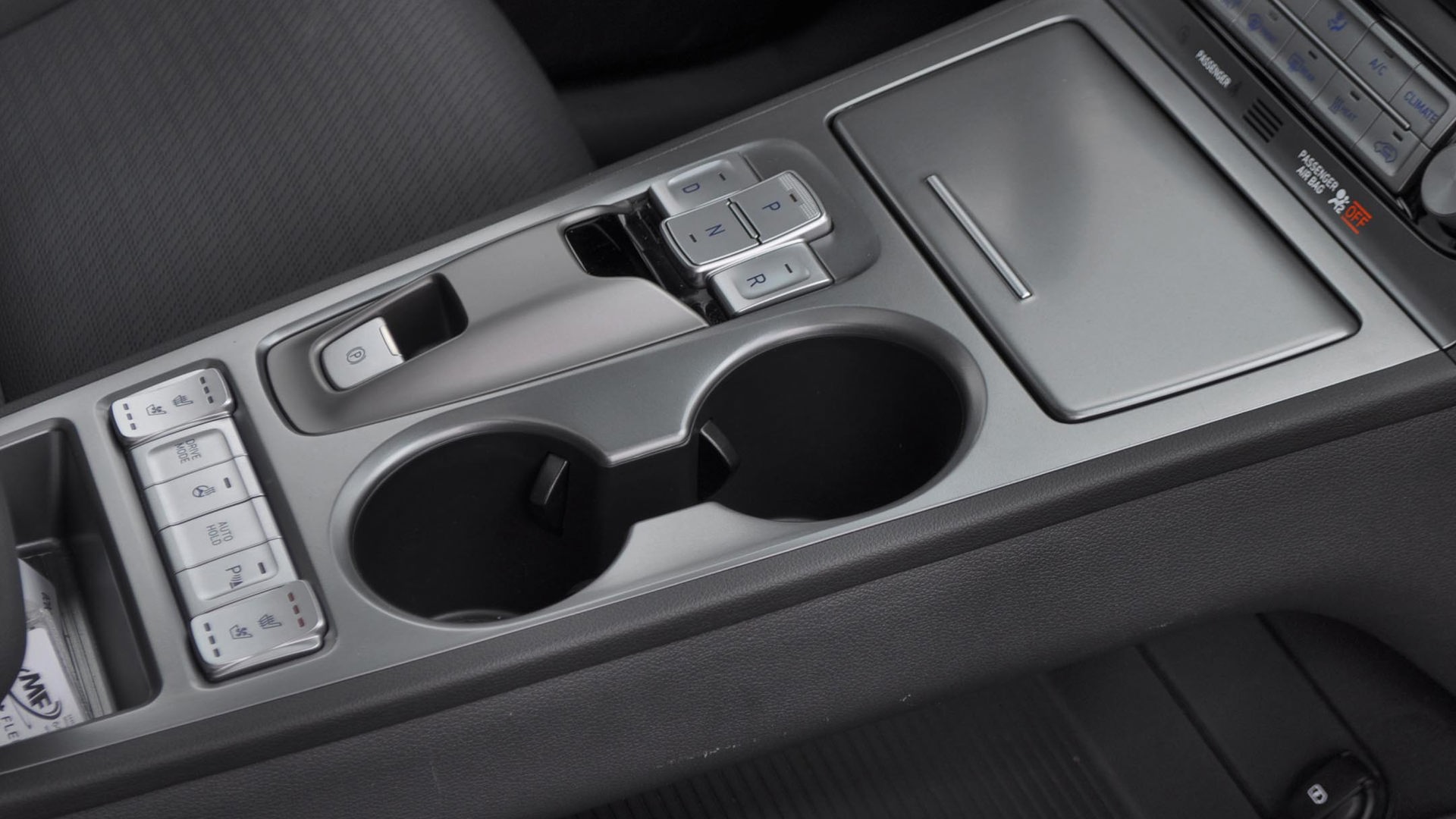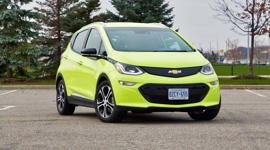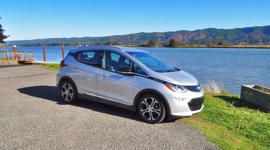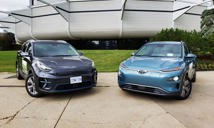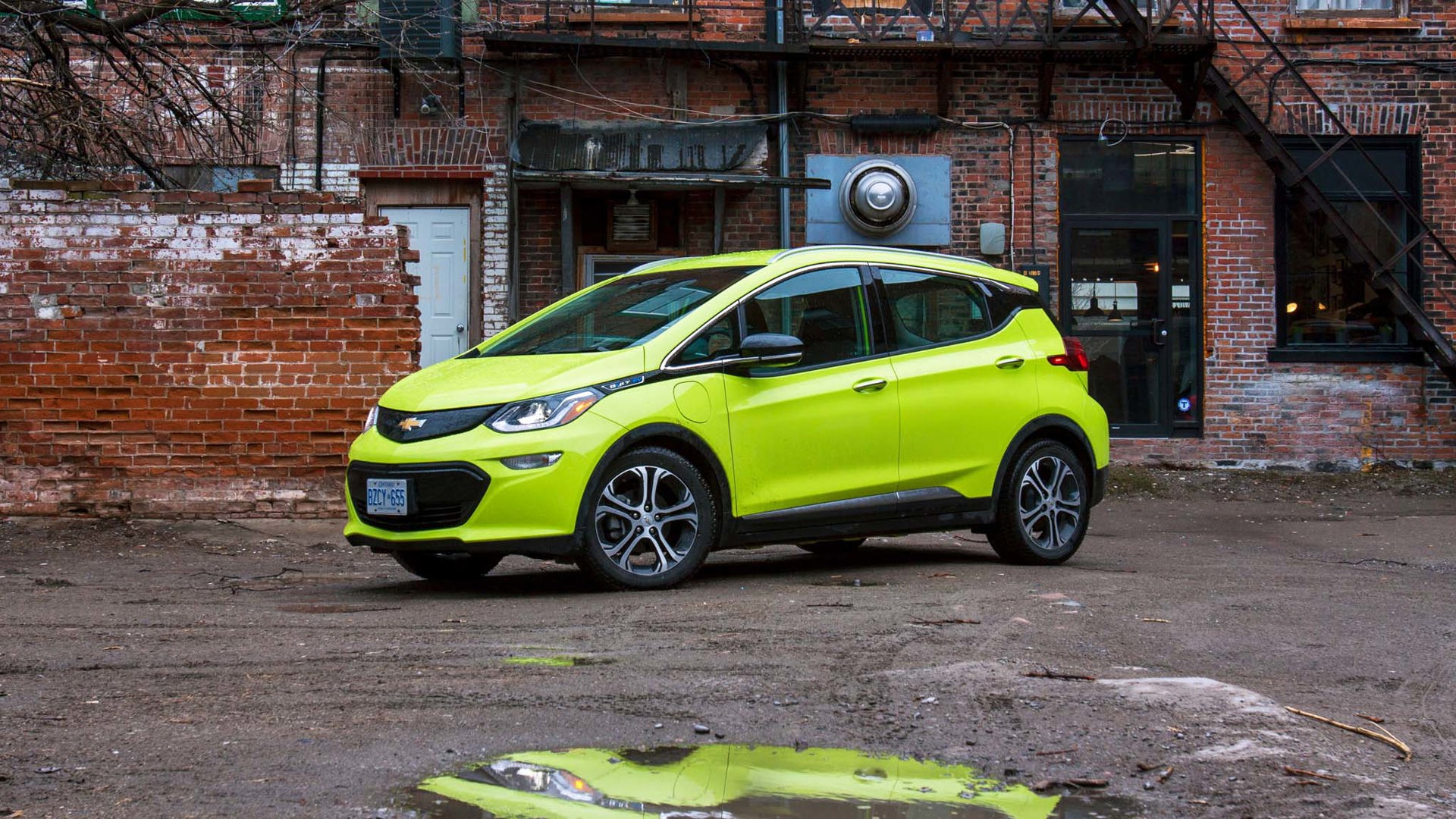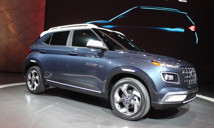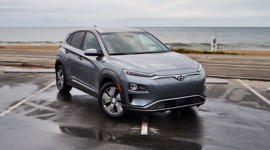Comparison Data
|
2019 Chevrolet Bolt Premier
|
2019 Hyundai Kona Electric
|
2019 Nissan Leaf Plus SL
|
|---|---|---|
|
Engine Displacement
150 kW
|
150 kW
|
160 kW
|
|
Engine Cylinders
n/a
|
n/a
|
n/a
|
|
Peak Horsepower
200 hp
|
201 hp
|
214 hp
|
|
Peak Torque
266 lb-ft
|
290 lb-ft
|
250 lb-ft
|
|
Fuel Economy
1.8/2.1/2.1 Le/100 km cty/hwy/cmb
|
1.8/2.2/2.0 Le/100 km cty/hwy/cmb
|
2.1/2.5/2.1 Le/100 km cty/hwy/cmb
|
|
Cargo Space
479 / 1,603 L seats down
|
544 / 1,297 L seats down
|
668 / 849 L seats down
|
|
Base Price
$49,600
|
$51,999
|
$42,698
|
|
A/C Tax
$100
|
$100
|
$100
|
|
Destination Fee
$1,795
|
$1,805
|
$1,950
|
|
Price as Tested
$53,045
|
$54,132
|
$52,048
|
|
Optional Equipment
$1,550 – Driver Confidence II Package $795; Shock $495; Black Bowtie Emblems $260
|
$200 – Pearl Paint $200
|
$7,400 – Leaf Plus SL $6,800; Two Tone Paint $600
|
Not only did April unofficially become Earth Month around these parts, with extra green car and electric vehicle coverage starting from when Earth Hour unofficially kicked off the month on March 30th and past Earth Day on April 22nd, it was also extra significant because details finally became available on Canada’s first national electric vehicle rebate program. That rebate kicks off on purchases made starting May 1st, and with some of the amendments made to the program and these vehicle prices over the past few weeks, all three of these long-range electric hatchbacks – okay, one more a crossover than hatchback – will be eligible for the top $5,000 federal government incentive.
Though this national rebate was announced with the federal budget in March, when we drove these cars initially, the Kona Electric didn’t look like it was going to qualify for any of the federal BEV incentive because its base price was $45,599, just above the initially announced $45,000 threshold.
Within days of us completing it, the final details of the program were released. “To be eligible for incentives,” the announcement said, “a vehicle must have a base-model manufacturer’s suggested retail price of less than $45,000 for passenger vehicles with six or fewer seats… Higher priced versions (trims) are eligible as long as the final manufacturer’s suggested retail price is $55,000 or less.”
And wouldn’t you know it: suddenly, the base price of a Kona Electric went down to $44,999, while the Ultimate trim tested here at an as tested price of $51,999 was also confirmed as eligible for the $5K discount. This is on top of any provincial rebate available, so if you currently reside in Quebec, you’ll be able to stack another $8,000 on top of the new federal rebate, and another $5,000 in BC – and potentially another $6,000 in BC if you have an older vehicle to scrap there as well.
Timing therefore couldn’t have been much better, save for a couple of rebate-eligible no-shows: the 2019 Kia Niro EV crossover and its more cubic 2020 Soul EV sibling are just landing on the market now, but weren’t available at the time of our test, though we tried hard for both.
One vehicle that we also attempted to secure but didn’t is the Tesla Model 3. As usual, Tesla doesn’t offer press vehicle loaners of its popular Model 3 all-electric sedan, and though we looked into renting another one, we simply couldn’t find an available 2019 model. Given that the Model 3 was also a different body style plus notably pricier than the others (its starting price currently lands higher than the national rebate cutoff), we kept this test to all-electric front-wheel drive hatchbacks with at least one available incentive to all Canadians. And as it turned out, this battle became our closest competition ever.
Third Place: Chevrolet Bolt
Michael Bettencourt
The Chevrolet Bolt came into this test as the grizzled veteran of the long-range mainstream EV wars, debuting in 2017 – long after the original Leaf hit the market, but before the Leaf’s second generation arrived, with its improved but still limited 240 km range. The Bolt’s realistic 383 km range therefore ruled as the highest range EV of any mainstream brand for two years, right up until the 415 km Hyundai Kona Electric arrived on the scene early in 2019. And while its range still lands as second highest in this group, it falls behind the others in a few different key areas.
But first the positives, and there are quite a few. The Bolt hatchback is and feels the quickest of the bunch, and its suspension soaked up bumps nicely. There were kudos for its airy interior, with large windows that let in lots of sunshine, and overall interior room.
It also had the most realistic range predictor, offering both low-end and high-end estimates, which will come in handy especially in the Canadian winter when most EV range estimates track very optimistic, given our cold temps and resultant relatively high heat usage. Heating an EV and its lithium-ion battery can eat up a healthy chunk of its winter range, in -20 temperatures and worst case scenarios up to 50 per cent of its rated range (as I learned with our first-gen Leaf), so having more range is the ultimate peace-of-mind luxury for EV buyers.
Interior room figures can be deceiving
“Surprisingly, it had the highest max interior volume of the group – and was the only one to boast a hands-free power lift gate,” noted Wimbush.
But the reason that this high interior volume figure was so surprising was because it certainly felt to be the thinnest of this threesome, its tall roof clearly outpacing the lack of elbow room width-wise. Perhaps this feeling was reinforced by the super-slim seats, clearly built for supermodel posteriors.
Its interior with fully digital centre and driver screens certainly looked futuristic, but the overall design was notably heavy on the plastic, and not the richly textured kind. “It was the only one with manual seats and no onboard navigation,” noted Wimbush. “It also made use of a lot more cheap, hard plastics than the Kona, or the Leaf.”
It was the only one to feature manually adjustable seats, and no native GPS system of its own – which seems bizarre in a $50k-plus car – forget your phone, or run it too low on battery, and you’re out of luck for navi directions. Others saw this as a mere potential annoyance. “It’s missing on-board navigation – which is fine if you’re willing to drive it off your phone, but annoying if you don’t have much data to play with,” noted Wallcraft.
But universally, what most drivers immediately complained about hopping out of the Bolt was something that used to be an issue for GM vehicles a generation ago, but not an issue for at least 20 years: a brittle-feeling turn signal stalk. “There was a seam in the turn signal stalk that creaked every time I touched it,” Wallcraft observed. “What a shame for such a progressive car to be undermined by what should be a truly minor issue.”
Other Bolts I’ve driven haven’t had turn signals that felt like this, so I’m fairly sure that there was an issue with this particular stalk that may/could be serviced back to normal. Outside this issue, and the fact that the Bolt used a notably heftier 23.62 kilowatt-hours/100 km than all the others, this Bolt truly didn’t do much wrong, but simply came up against a couple of more stylish, better equipped and more comfortable rivals at a similar price point.
Second Place: Nissan Leaf Plus
Lesley Wimbush
While Elon Musk and Tesla were hogging the electric car spotlight, the Nissan Leaf quietly took the world’s best-selling electric car title. A five-door compact hatchback that debuted in 2010, the Leaf was the first EV that didn’t resemble a science project. Nissan has since sold more than 400,000 Leafs (Leaves?) globally.
Sports car development centres around the never-ending quest for more power, but with electric cars it’s all about range. The first-generation Leaf had just over 130 km maximum range under ideal conditions – and a lot less when the battery got cold. The second – and current – generation Leaf has a 240 km range, but there’s an additional Plus model that is capable of up to 363 km on a single charge.
Th Leaf Plus model just went on sale in Canada in April, and arrived just in time for our test, as well as the impending federal rebate – so its market timing couldn’t have been much better planned.
Arguably best-looking, and most luxurious
The Leaf received a ground-up do-over in 2017 and returned a much handsomer car. A littler more sophisticated too, the Leaf gains the familial “v-power” front fascia, and loses the waddling duck hindquarters and huge rear taillights. Compared to the acid green Bolt, and alien-faced Kona, the Leaf is easily the most mainstream-looking in our group with no glaring visual cues hinting at its electric identity.
The Leaf’s cabin was the only one to boast plump leather seats and a semblance of luxury, although as Wallcraft pointed out, the sombre colour did make it feel less airy and more closed in than the others. I particularly liked the flat-bottomed, leather-wrapped wheel, though its lack of telescoping is a rather glaring omission in a vehicle that tops out over $50K.
Surprisingly, there’s plenty of room for rear passengers, and they also get heated seats. While the larger battery pack of the Leaf Plus in no way compromises its interior space, as Bettencourt pointed out, the SL trim’s premium sound system does intrude into the upper cargo area.
Surprisingly, the Leaf was the hands-down winner for trunk space, with 668 L, compared to the 478 L of the Bolt, and the paltry 334 L of the Kona. Drop the rear seats down however, and it was a different story. The Bolt was the unexpected champ with an astonishing 1,602 L, the Kona with an adequate 1,116 L and the Leaf lagging far behind with 850 L. Clearly, the Leaf isn’t a great choice if you need to haul goods in addition to passengers.
The Leaf Plus boasted the most impressive list of safety, comfort, and connectivity technology; from a heated steering wheel, navigation, premium Bose sound, and heated front and rear seats, to the Pro Pilot Plus driving assistance package. Prices of the trio were so closely matched that the Bolt’s lack of navigation, and the absence of a 360-degree back-up camera in the Kona were noticeable disadvantages compared to the laundry list of amenities in the Leaf.
Alien shifter, plus easy one-pedal driving
Like the Kona, the Leaf Plus is equipped with an annoyingly futuristic gear selector that does take a bit of getting used to. But once on the road, the Leaf is pleasant to drive and there’s a surprising burst of power when you step on the accelerator. In contrast to the regular Leaf’s 147 hp and 236 lb-ft, the Leaf Plus has 214 hp and 250 pound feet of torque – enough to sprint from zero to 100 km/h in about 7 seconds. Maximize the regenerative braking by simply engaging the e-pedal button, and the Leaf Plus becomes a one-pedal drive, slowing down enough with a simple lift of the throttle that the brake pedal can be used only in panic braking.
“I like the aggressive feel of the regen under one-pedal driving with the e-pedal,” wrote Wallcraft. “Where the Kona does better is that not everyone agrees, and its variety of drive modes gives drivers more freedom of adjustment.”
Of the three, the Leaf has the least amount of body roll, but it’s not as engaging to drive as the Bolt or the Kona.
One added bonus the Leaf Plus has is that its onboard charging cable is compatible with both Level 1 and Level 2 charging, using a 240 volt outlet instead of installing an expensive Level 2 home charger.
There’s also an impressive value story here, at least in this gathering of mainstream yet long range EVs. The Leaf Plus was the least expensive of the group, yet still rings in at an as tested price of $52,048 (the bigger battery is a $6,500 option). With a base model priced at $40,698, and the new $5,000 federal rebate available for passenger EVs whose base model starts under $45,000, lower-spec’d Leaf Plus models could undercut the prices of these others by a more notable amount, though EV enthusiasts would point to a lack of active cooling in its battery system as evidence of a less sophisticated if still futuristic drivetrain.
Still, even up against its slightly pricier and slightly-longer-range rivals here, the Leaf Plus managed to take first place in four of seven overall categories, the most of any EV in this group. And in the final scoring data, out of a total of 255 possible points, the Leaf Plus ended up with 197.3, compared to the winner’s super close 197.6. In our long history of vehicle comparison tests, we’ve never ended up with a finish this microscopically close – or with a tie for first place. This one very well could have been, as it literally came down to less than half a point of difference. But in the end, a different EV scored numerically higher overall, and thus clips the finish line tape first in the closest of photo finishes.
Winner: Hyundai Kona Electric
Stephanie Wallcraft
Throughout our day of testing, it was clear this competition was going to be close. But are we surprised that it gave us our closest finish ever in an autoTRADER.ca comparison test?
Actually, it’s a very fitting result and highly reflective of where our sentiments landed. While the two top finishers perform similarly in a lot of ways, the Kona EV excels just enough in some key areas to push it over the top. However, that means that it must naturally land behind the Leaf Plus in some respects.
The number one thing that EV buyers look at is range, of course, which is a fight that the Kona wins on paper at 415 km from its 64 kWh battery as opposed to the Bolt’s 383 km/60 kWh and the Leaf Plus’s 363 km/62 kWh.
Interestingly, charging times vary more widely. To get from 10 percent to 80 percent on a Level 3 charger, the Leaf Plus is the fastest at 45 minutes to the Kona’s 54 minutes and the Bolt’s 65 minutes. But if you’ll use a Level 2 charger more often, as most will, the Bolt and the Kona are closer at 9.3 and 9.5 hours respectively, while the Leaf Plus will take 11.5 hours.
Gamification and range tops in Kona Electric
Where the Kona stands out most to my mind, though, is in its successful gamification of the EV driving experience. Most electrified vehicles provide some degree of feedback and control over braking strength and driving efficiency, but the Kona takes it to new heights with three regen levels, a not-so-super-secret ECO+ mode with a speed limiter, real-time braking effectiveness results, and graphs and percentages for tracking your progress.
At one point it told me I was driving 95 percent efficiently, and I know how I drive, so either it’s prone to flattery or its standards aren’t especially high. It did tell me that I managed to recoup 0.4 km of charge with a single braking move, which truly motivated me to try to do better. I’m certain that stuff like this is the key to converting the Xbox Generation to more Earth-friendly driving methods. It gives competitive people a place to focus their energy.
“The level of onboard tech is impressive,” said Lesley Wimbush, who has more longer-range experience with the Kona Electric than most anyone in the country after taking it on a nearly 500 km drive to Detroit (and a similar distance back) just after it hit the market earlier this year. “Particularly useful is the route guidance notification when the destination distance exceeds range, and display of available charging stations en route.”
On the other hand, we agree universally that one of the Kona’s key detriments is its visual impression, both inside and out. EVs have largely graduated from these attempts at looking space-age because in general people prefer it when they look like regular cars. But it seems Hyundai’s design team wanted to give it a try anyway.
“Once you get past the strange, alien face of the electric Kona, it’s a vehicle that really grows on you,” Wimbush said. “There’s an abundance of budget materials inside, but they’re reasonably attractive and adequately comfortable.”
Nice interiors, but not $53K nice
“Sadly, none of these $53,000-ish BEVs have $53K interiors,” Bettencourt said, “one glaring example of how high battery costs versus regular powertrain components hurt the appeal of EVs in multiple areas.”
There are lots of features in the Kona Electric however, with niceties like leather upholstery, ventilated front seats, LED headlights, a power sunroof, and the 8-inch touchscreen navigation system. Bettencourt also commented on the fact that the push-button transmission, although it does have a lockout function, might be prone to accidental brush-pasts at lower speeds. I find that the bigger concern is the light chrome-colour finish that covers that entire area of the centre console, which reflects a lot of light and make it hard to see things like which level a heated seat is at – a far more important detail in an electric car than anywhere else.
There’s one more thing we don’t love: the Kona Electric has an oddly musical deceleration noise that we don’t find very appealing.
“The strange, low-speed hum that sounds like a train would drive me batty in this car,” Bettencourt said. “I wish there was a button to turn it off.”
“Aside from the eerie musical chords when cruising to a stop,” Wimbush added, “the Kona is uber-quiet, and I really enjoyed its tight suspension and body control.”
We agree on these last two points: there clearly hasn’t been any skimping on sound-deadening materials here because the Kona has an impressively quiet interior, even for an electric car, and its on-road manners make it engaging and great fun to drive.
Conclusion
So, what this ultimately comes down to is personal preference. Would you rather own a Kona Electric and take home an outright advantage on range and comfort and interior spaciousness, or do you prefer having a Leaf Plus in your driveway that’s very close on quality and capability, but that people are less likely to see as sticking out like a sore thumb?
Either way, we happily recommend whichever electric car you prefer. We just recommend the 2019 Hyundai Kona Electric a tiny smidgen more.
